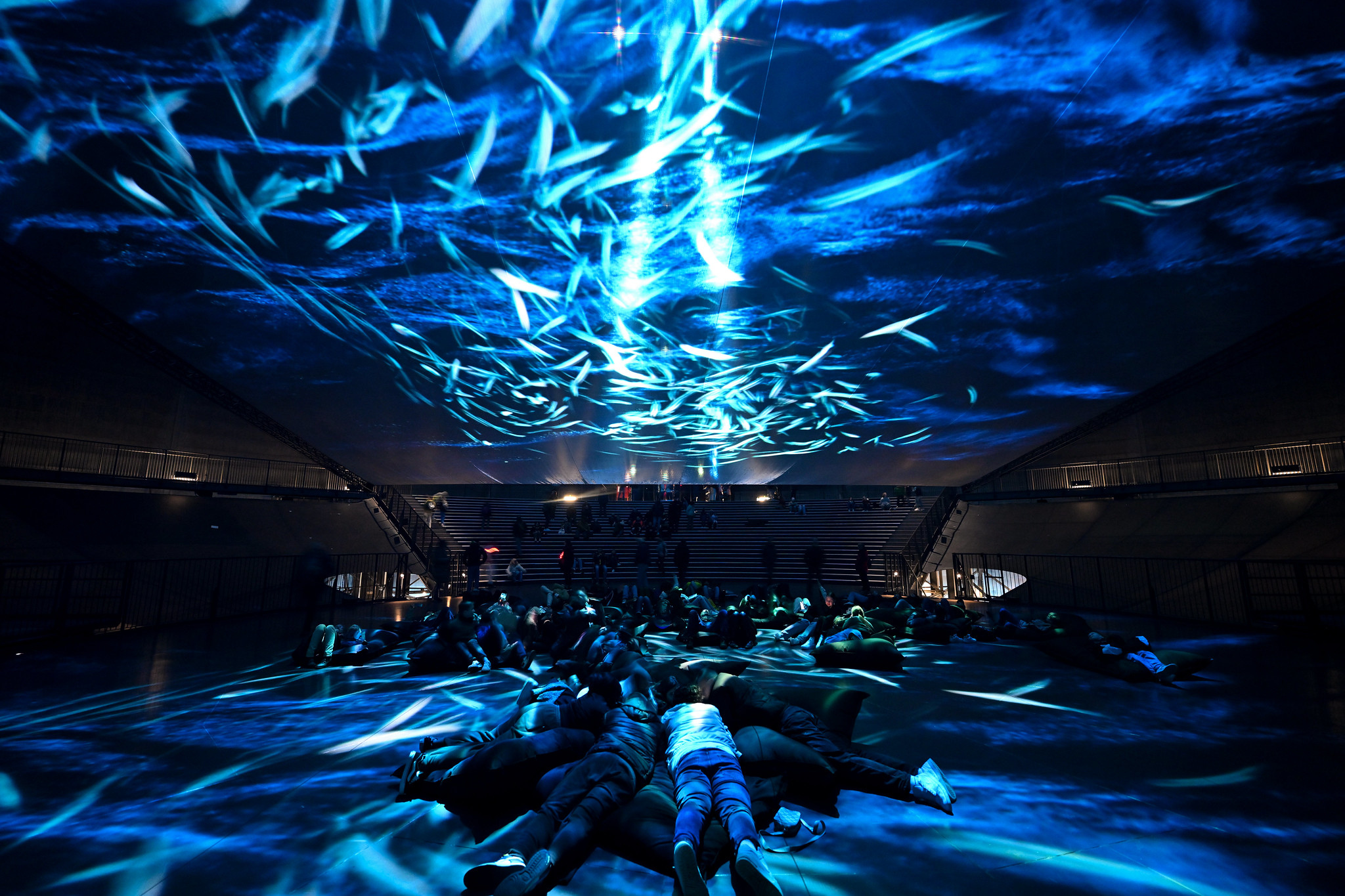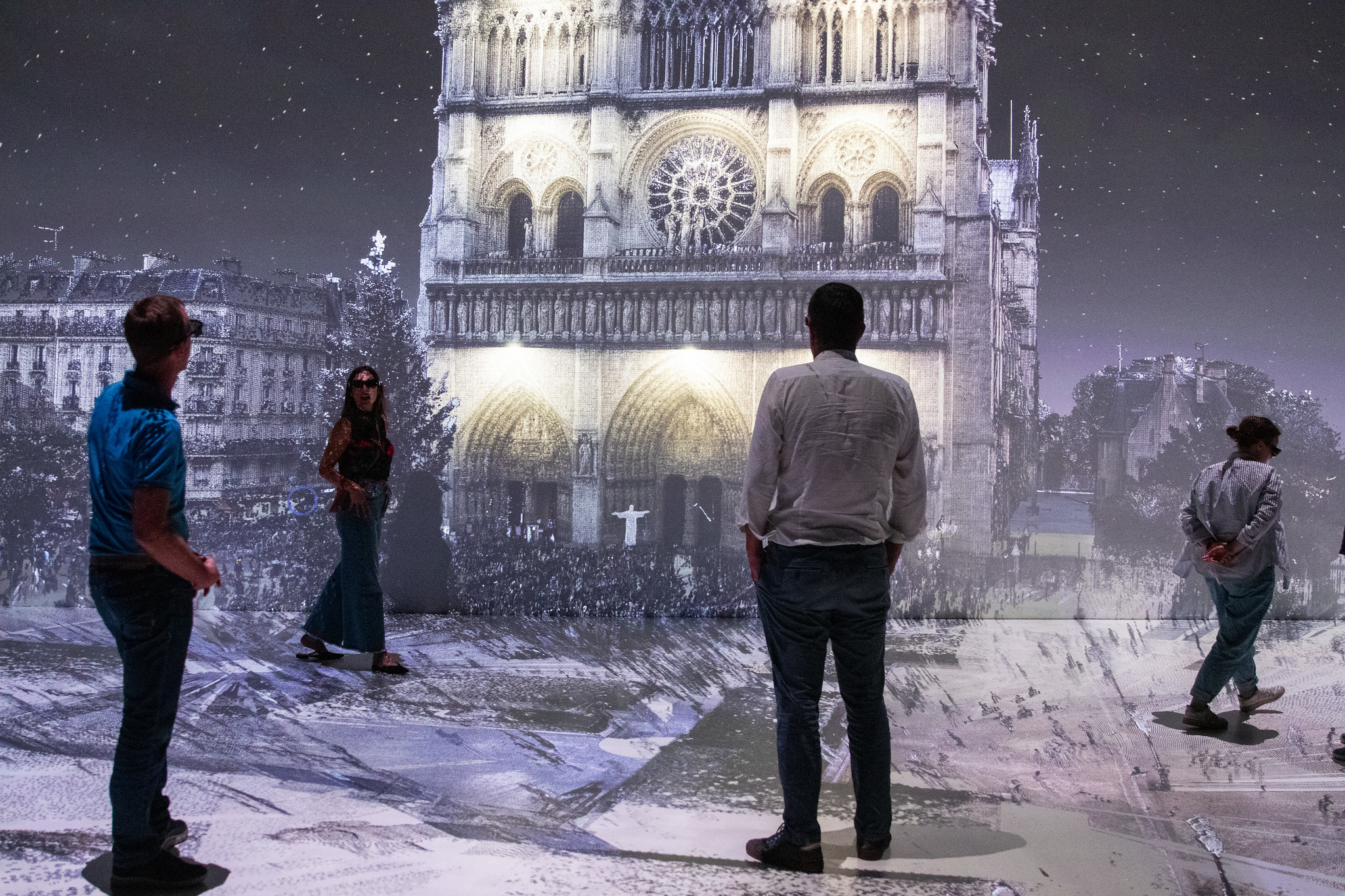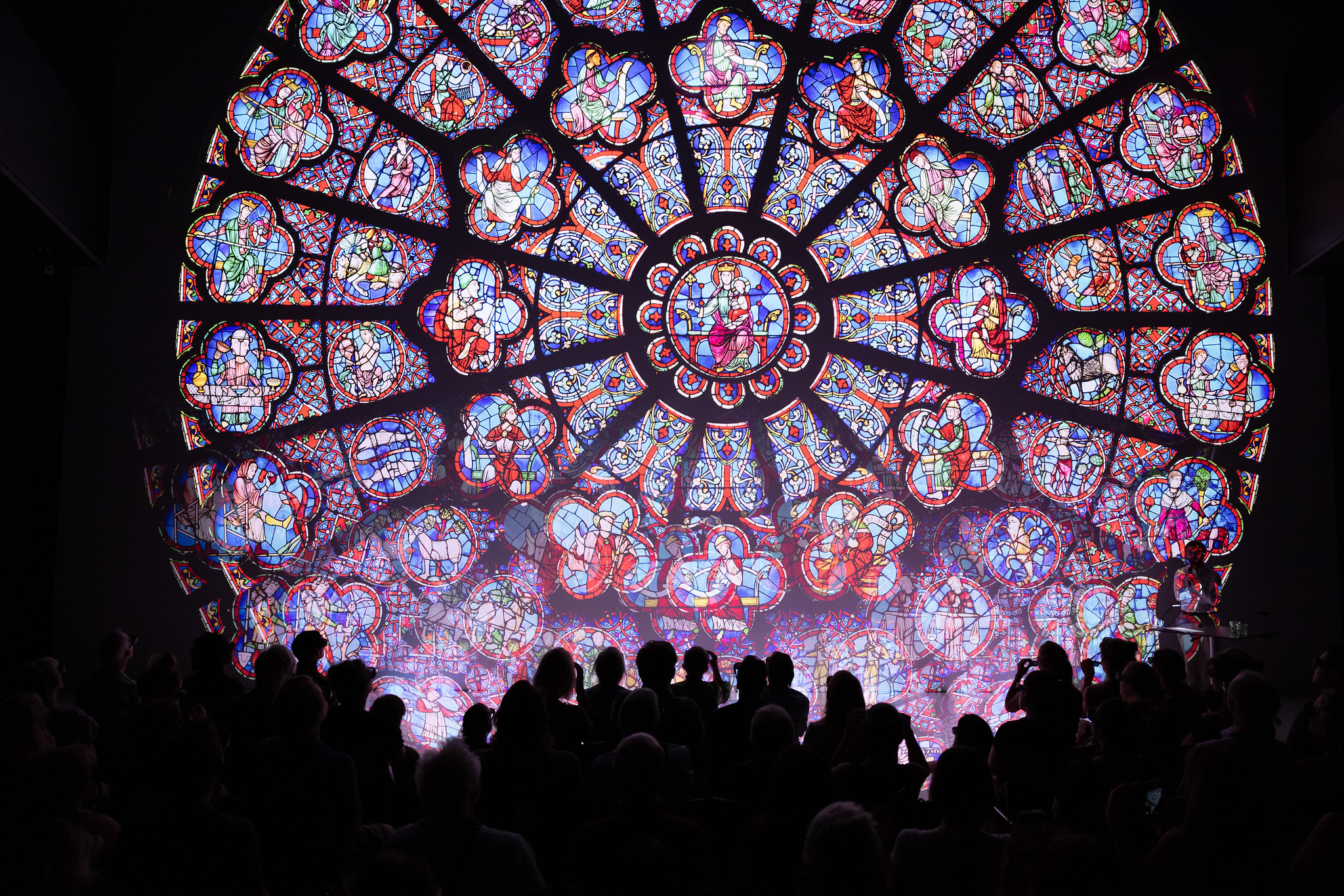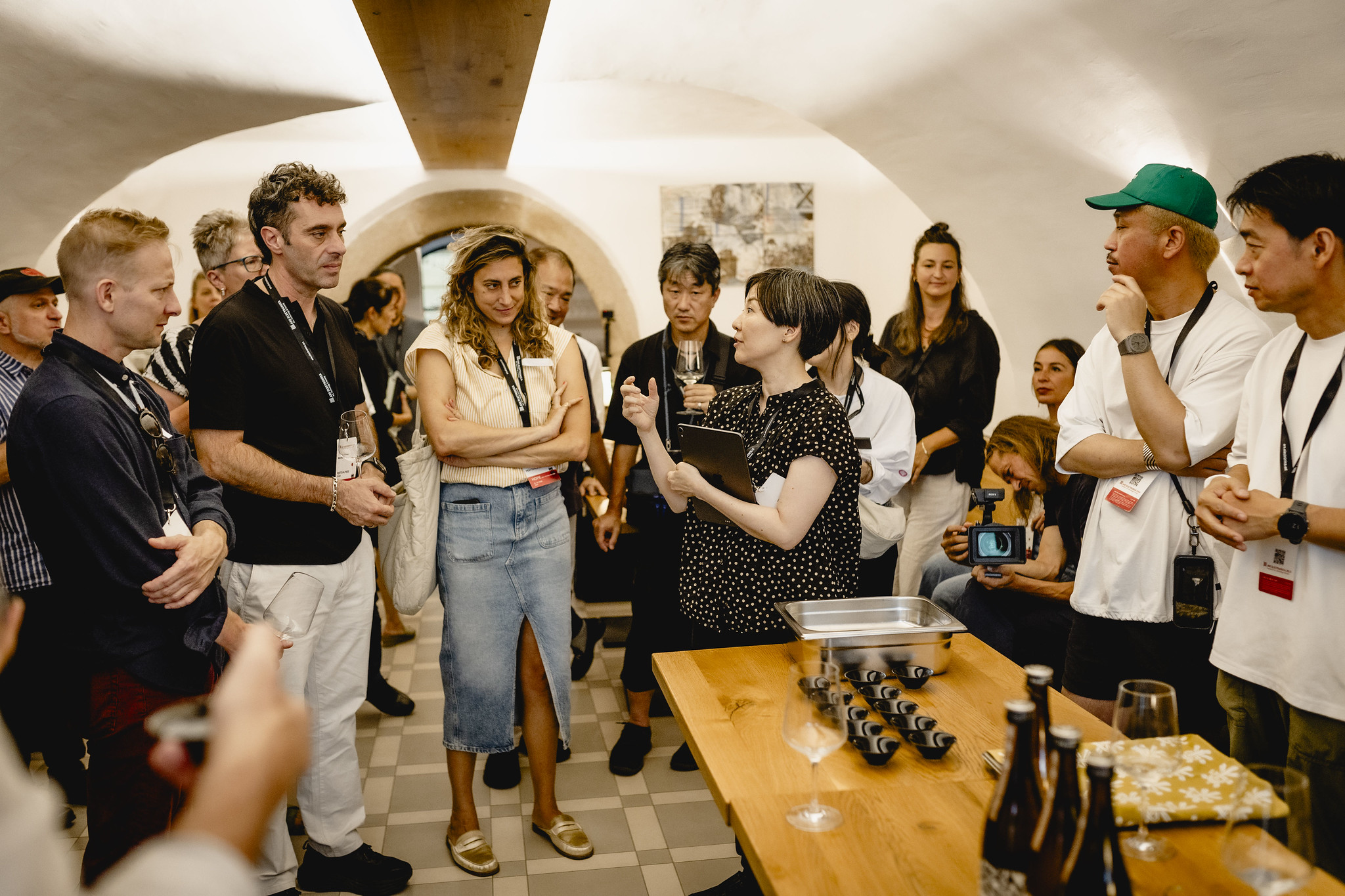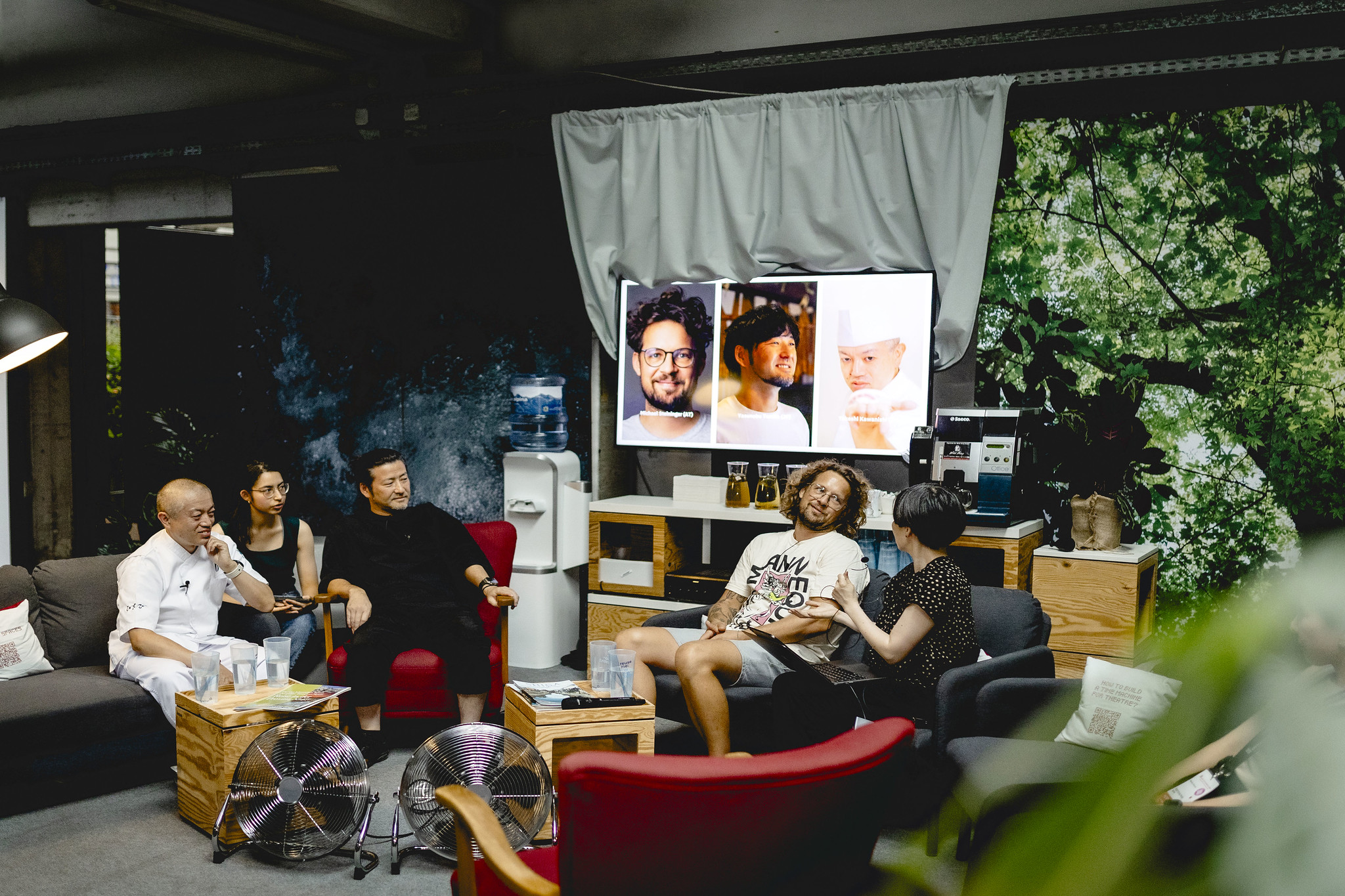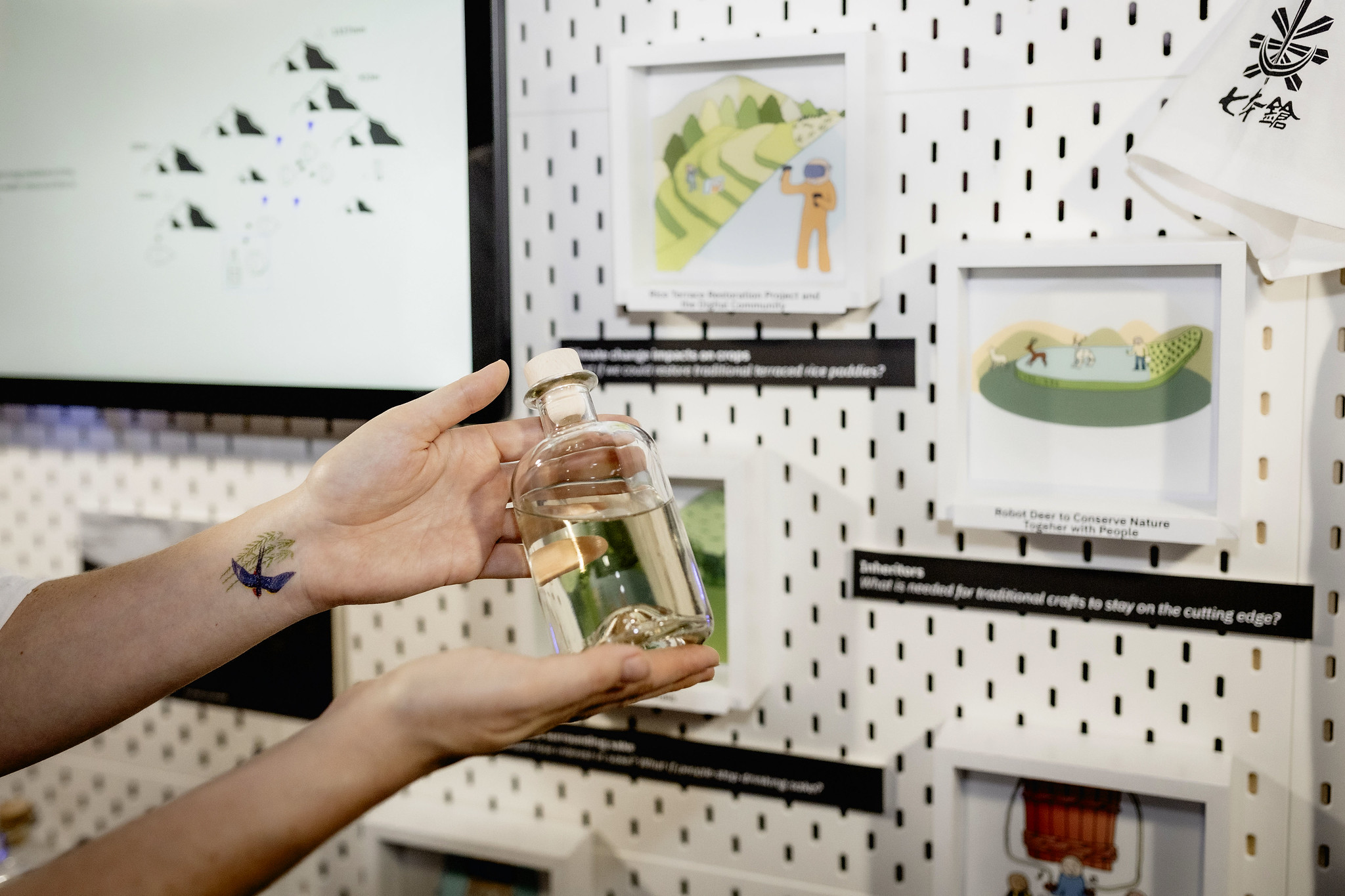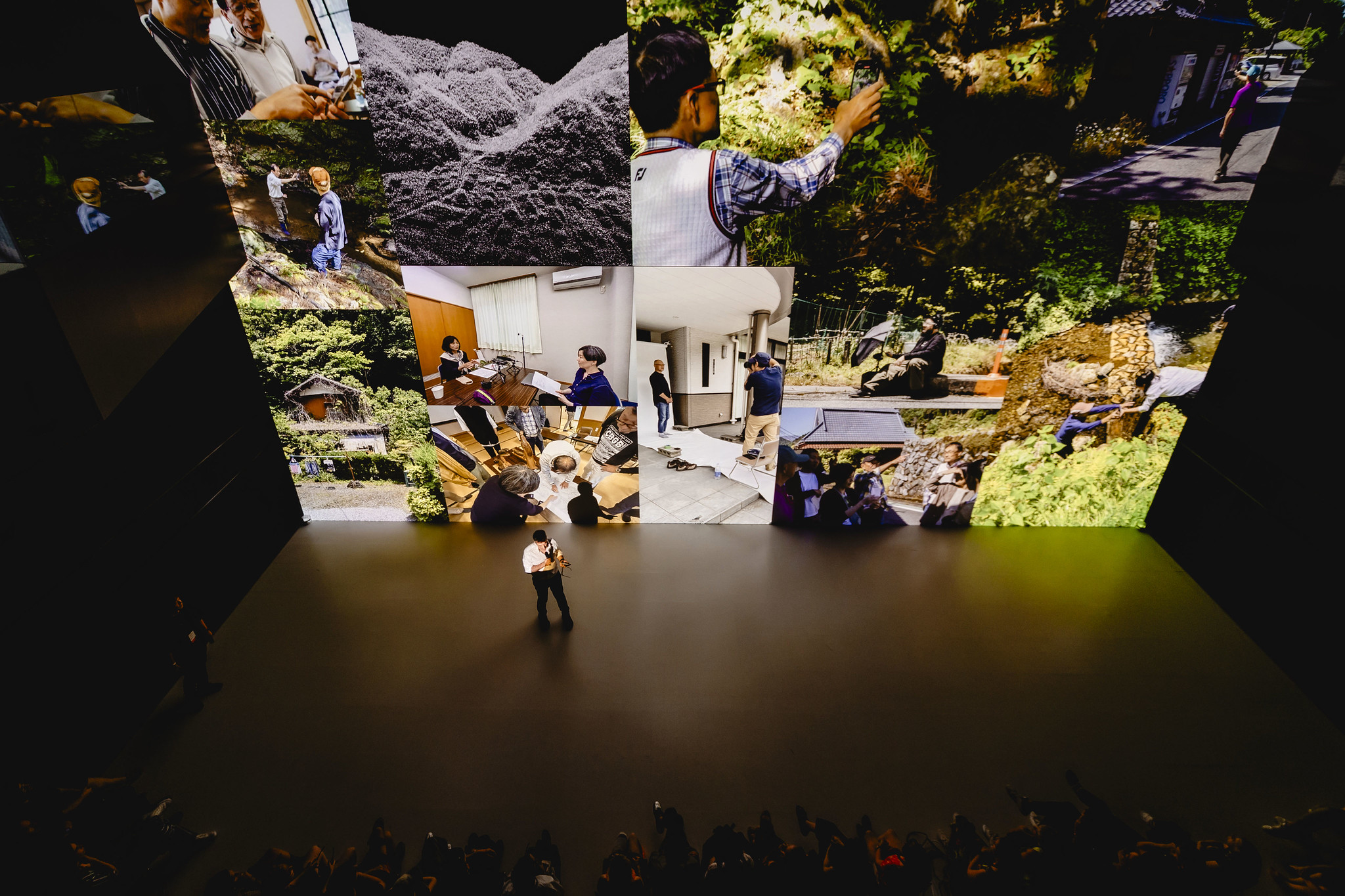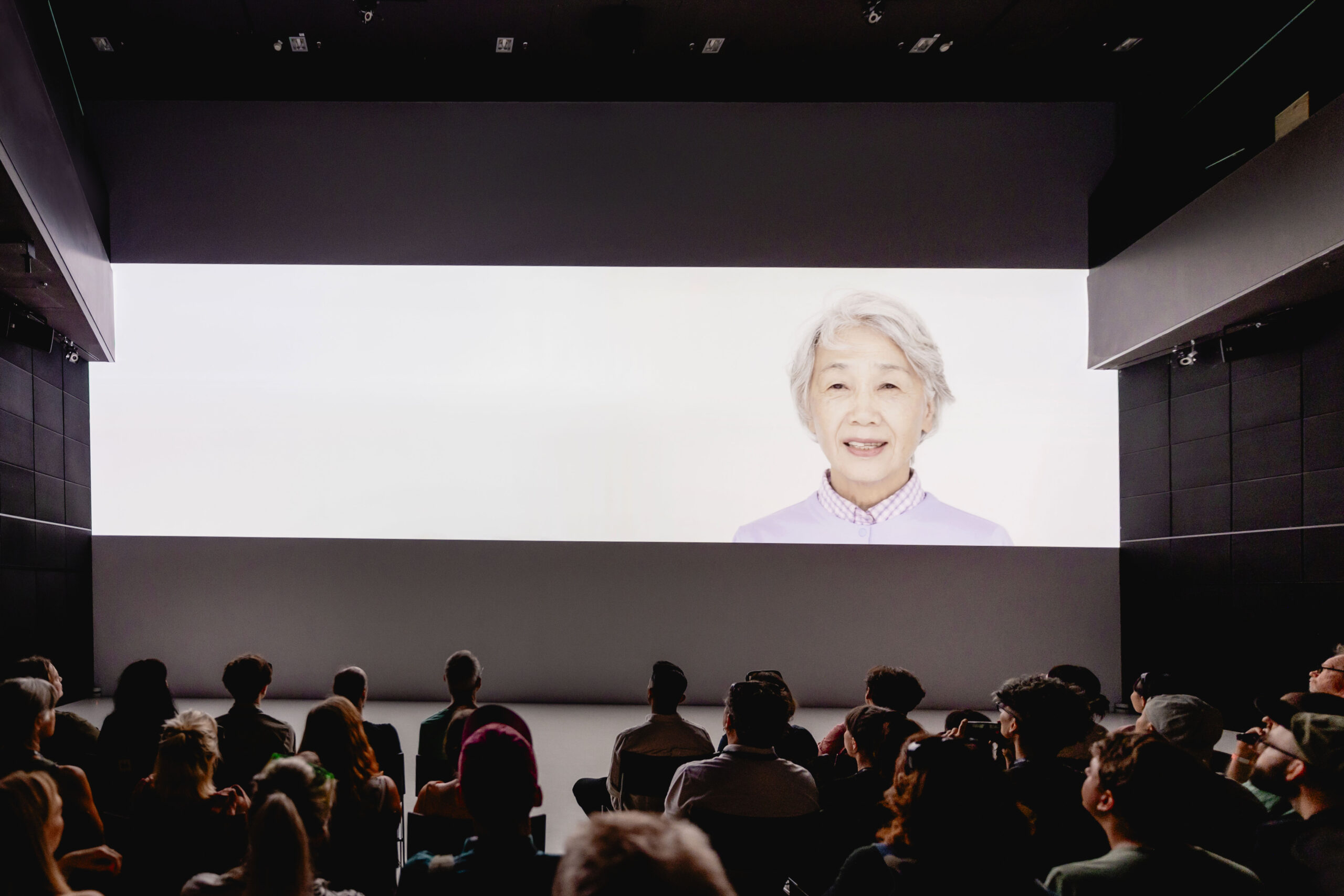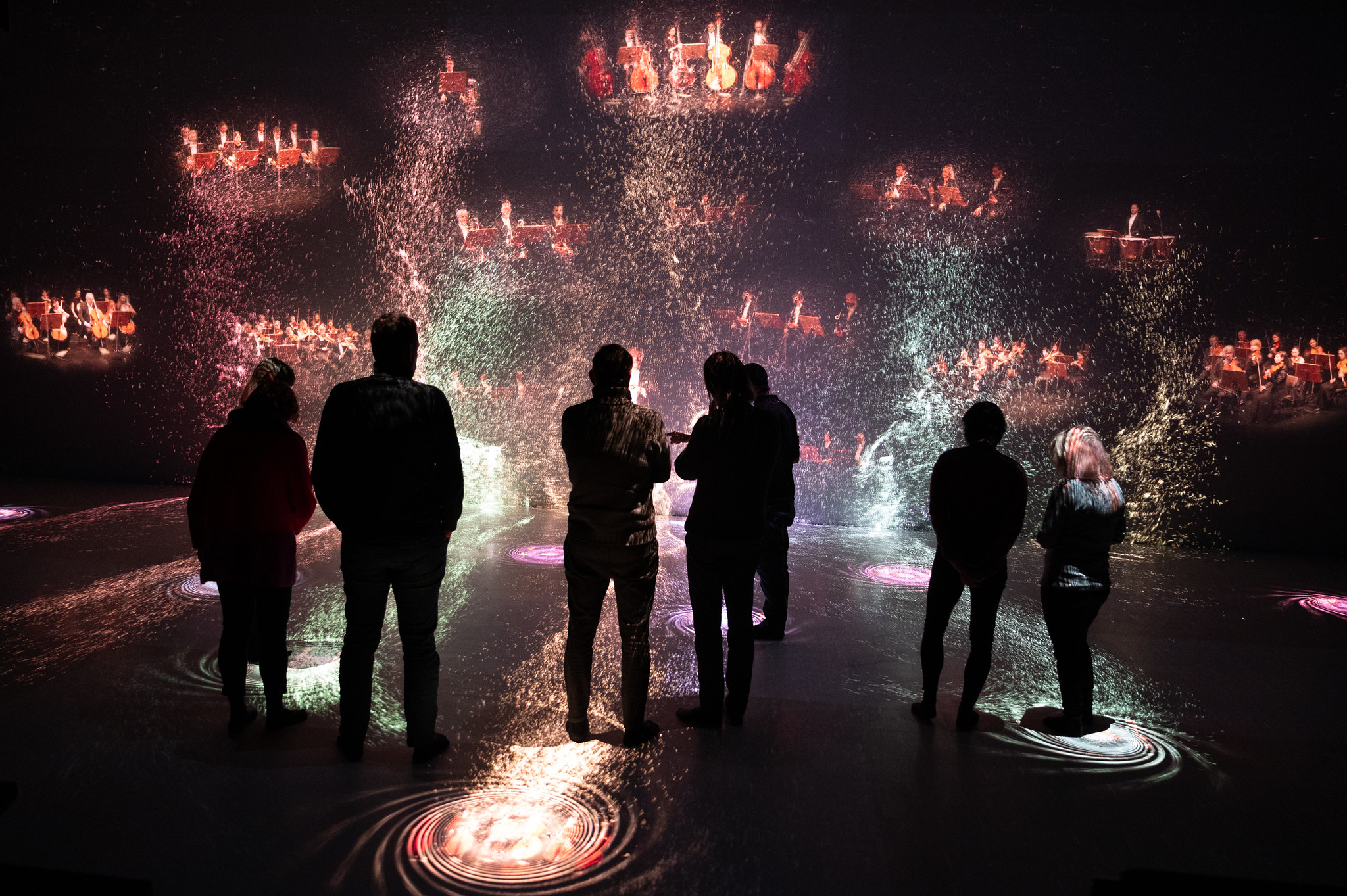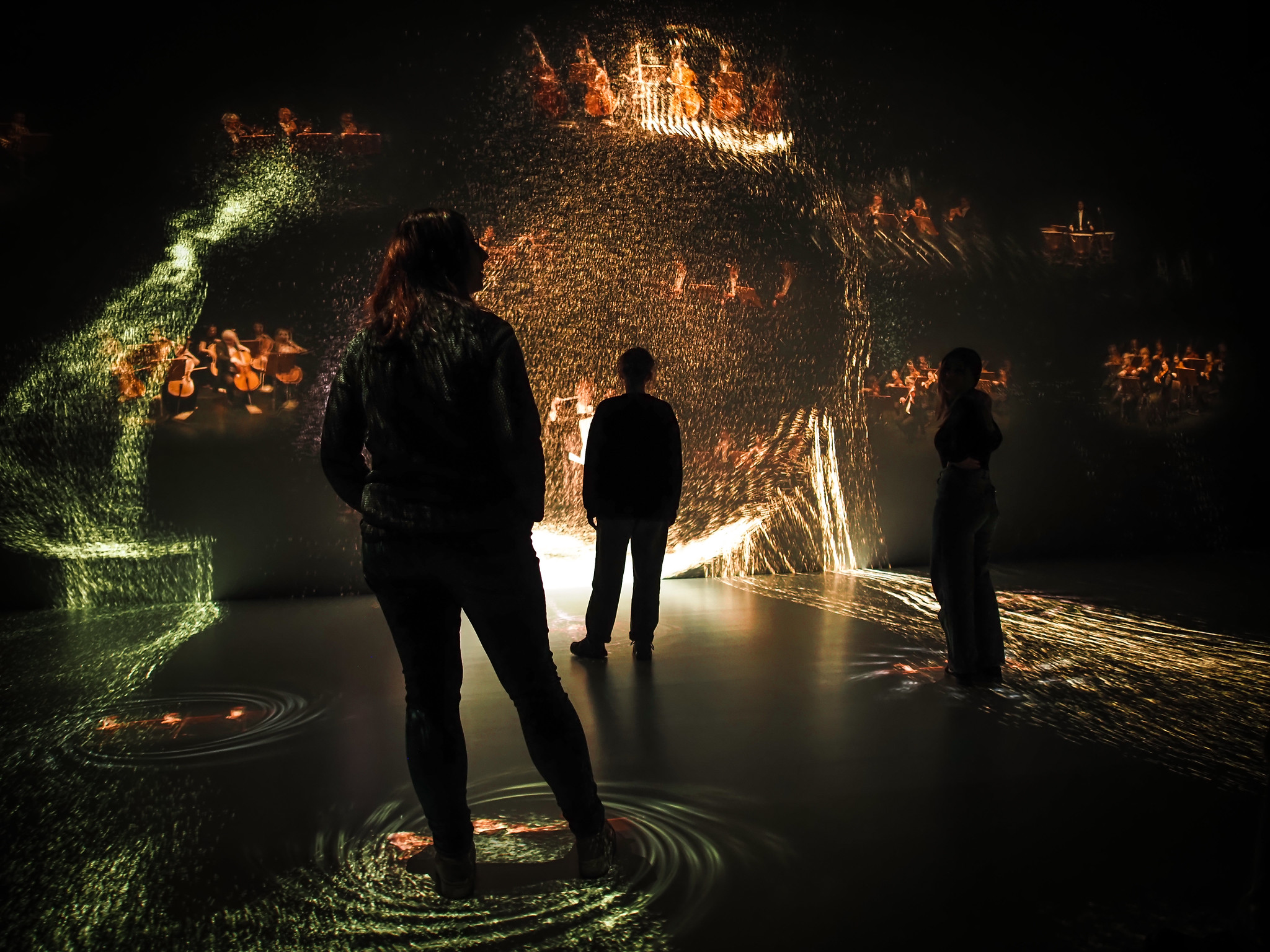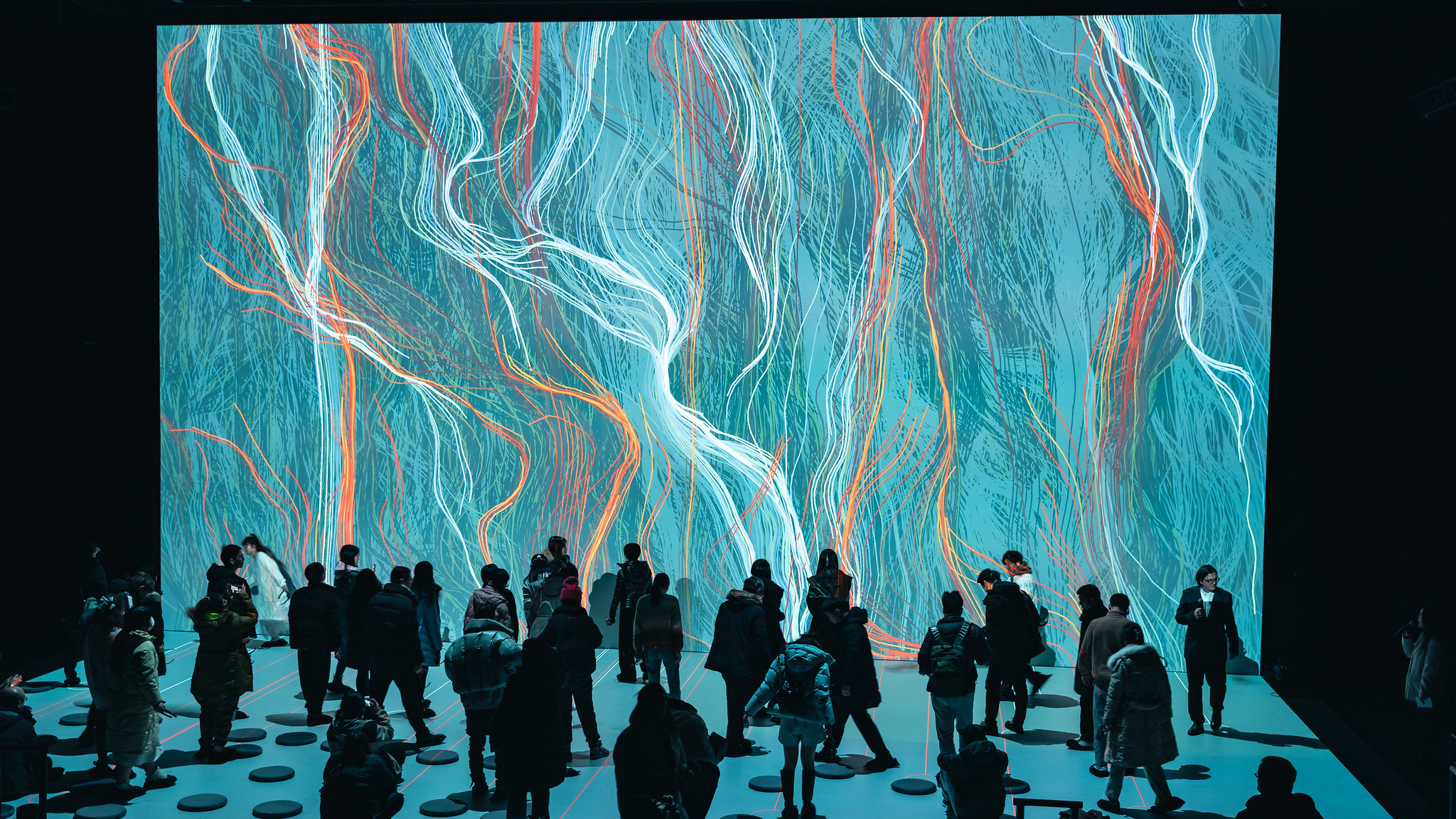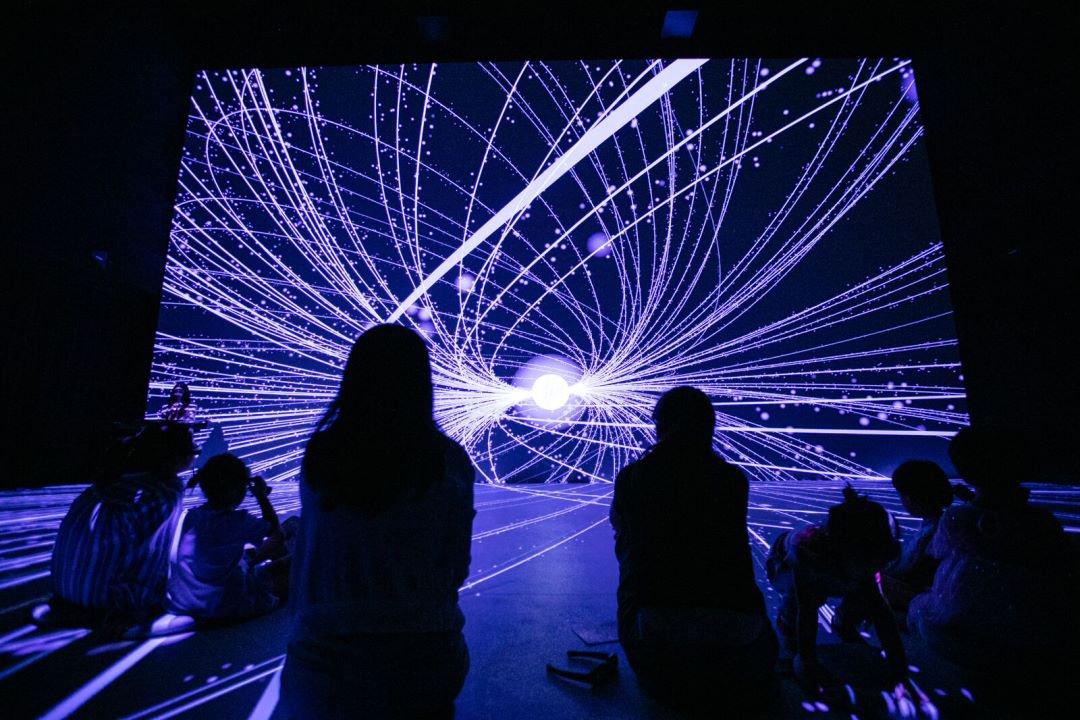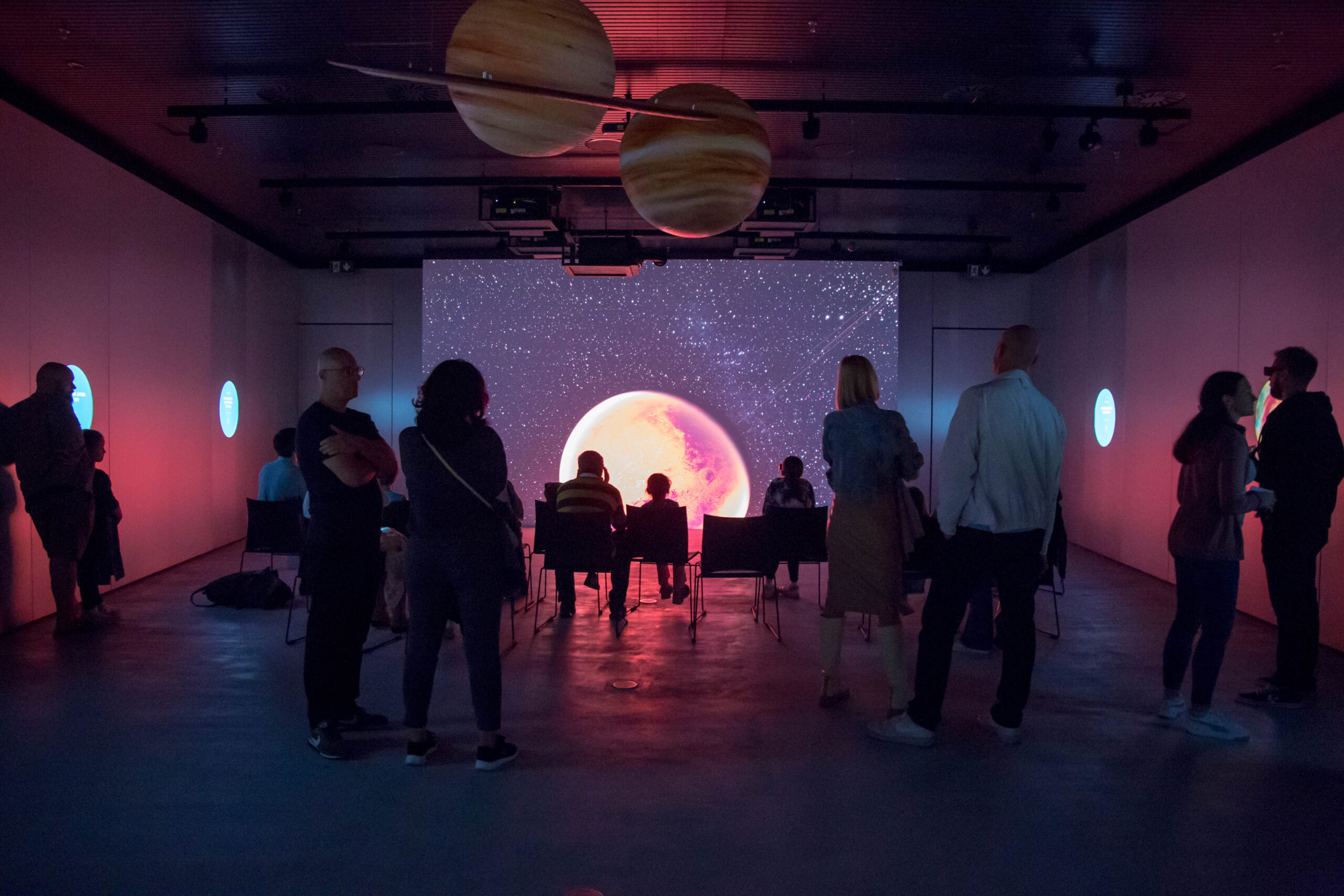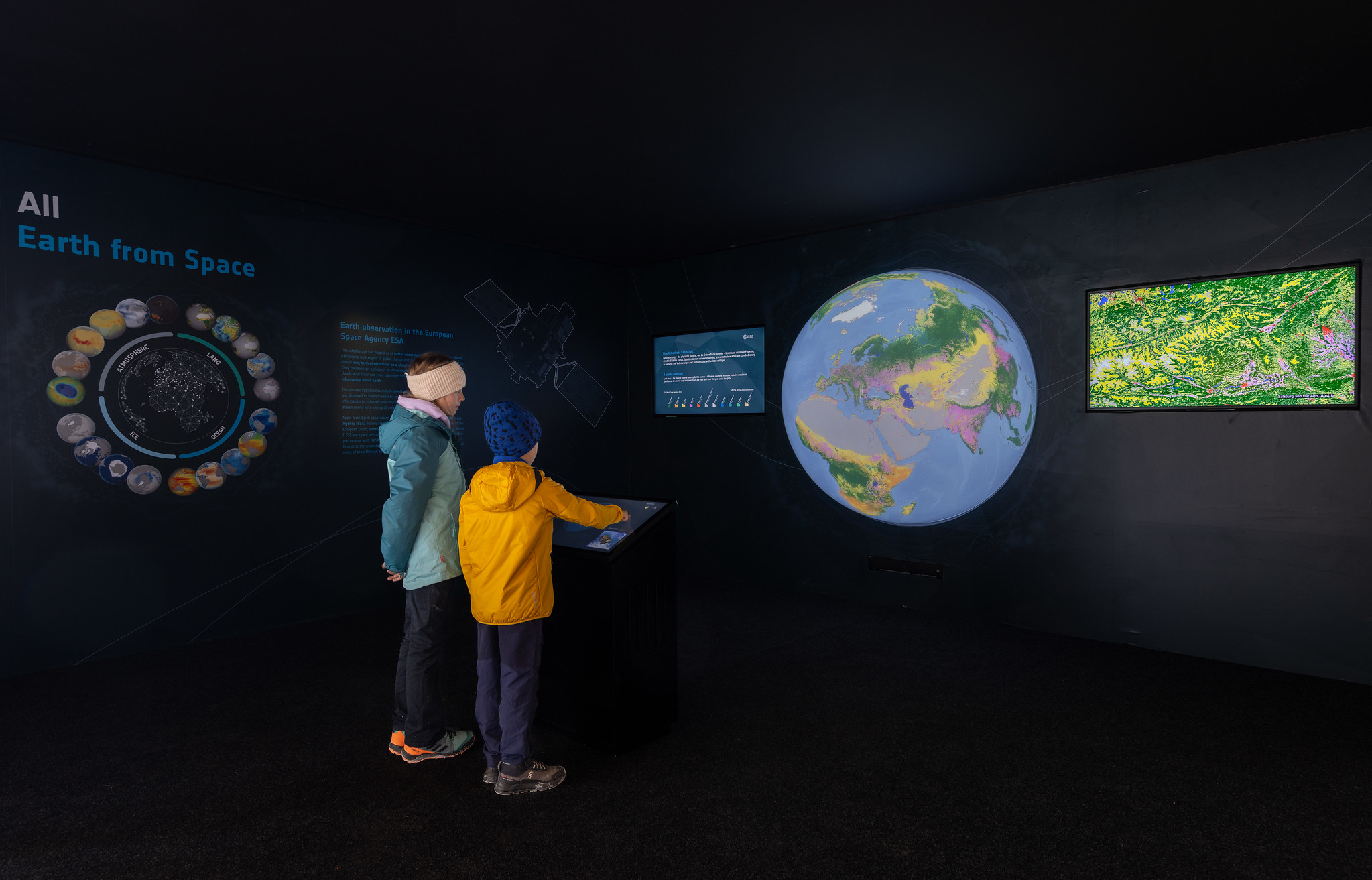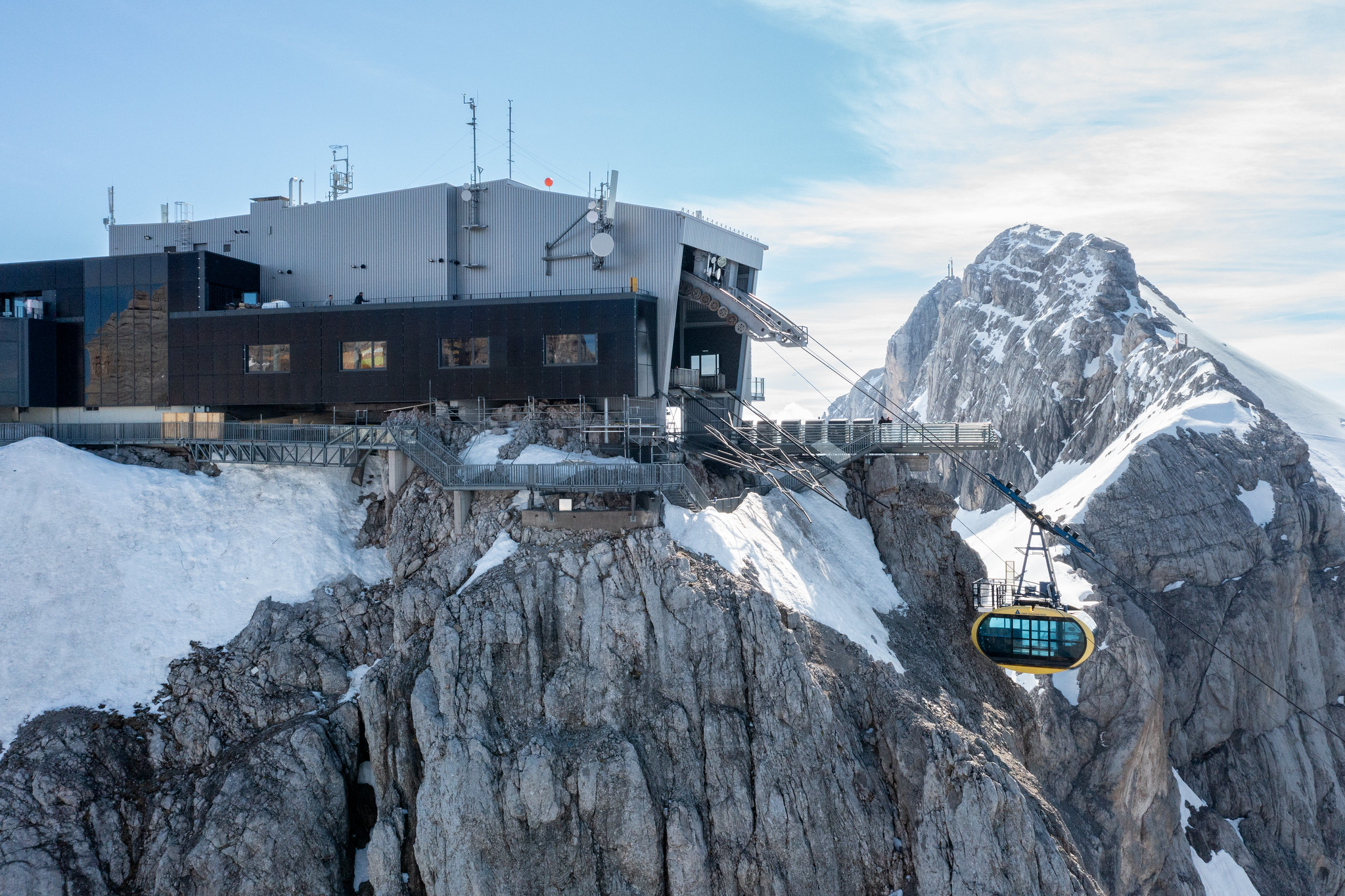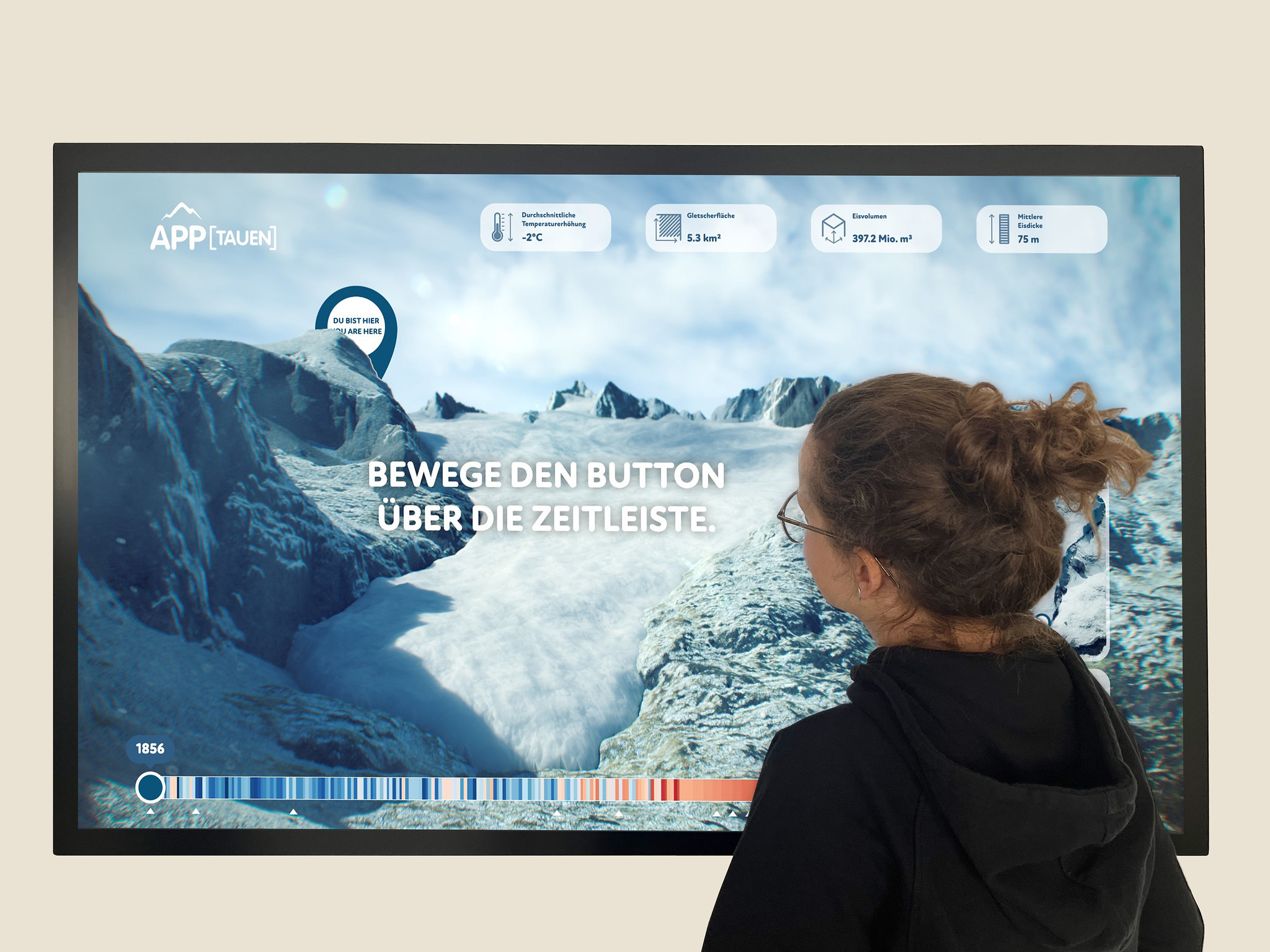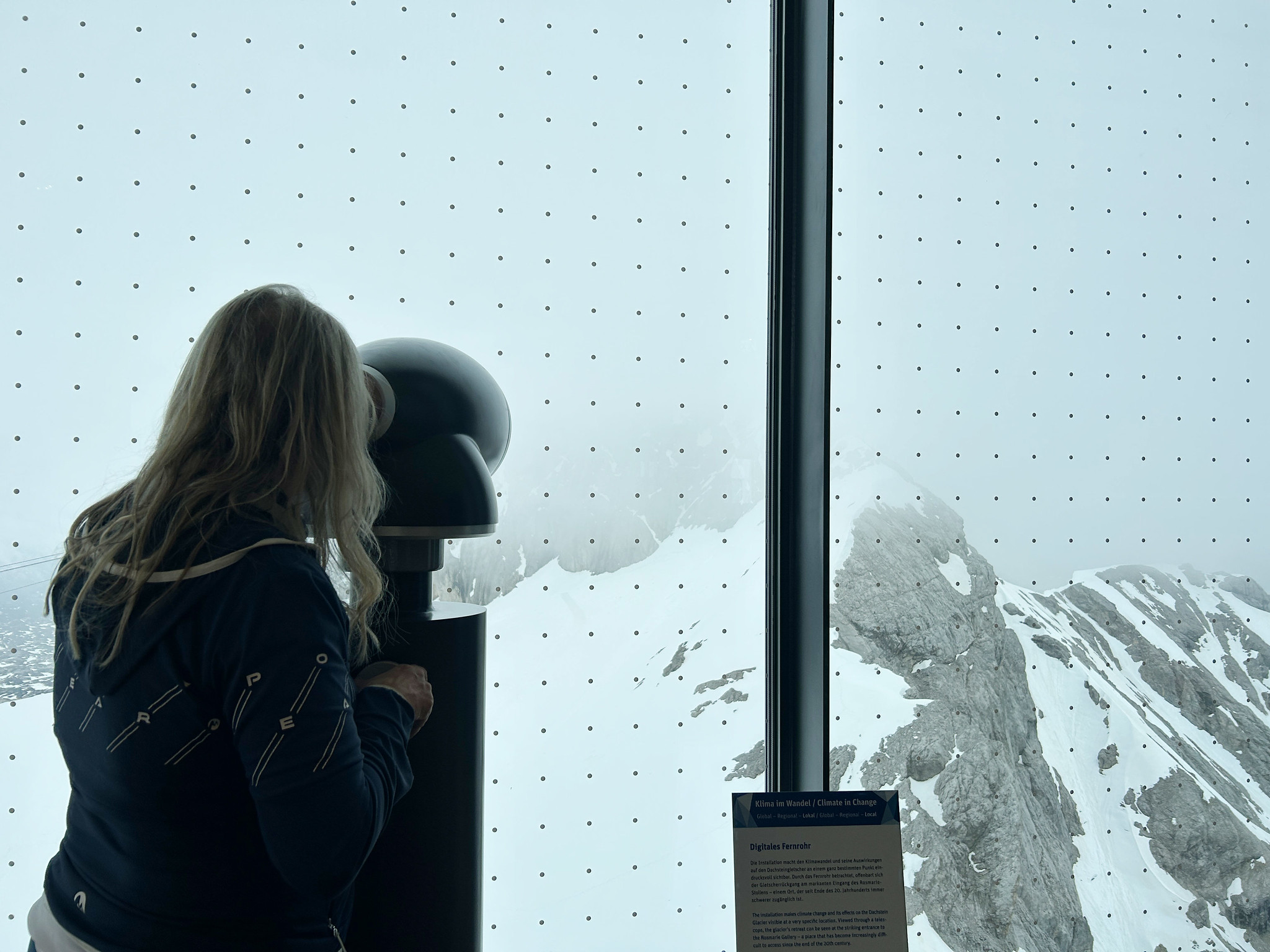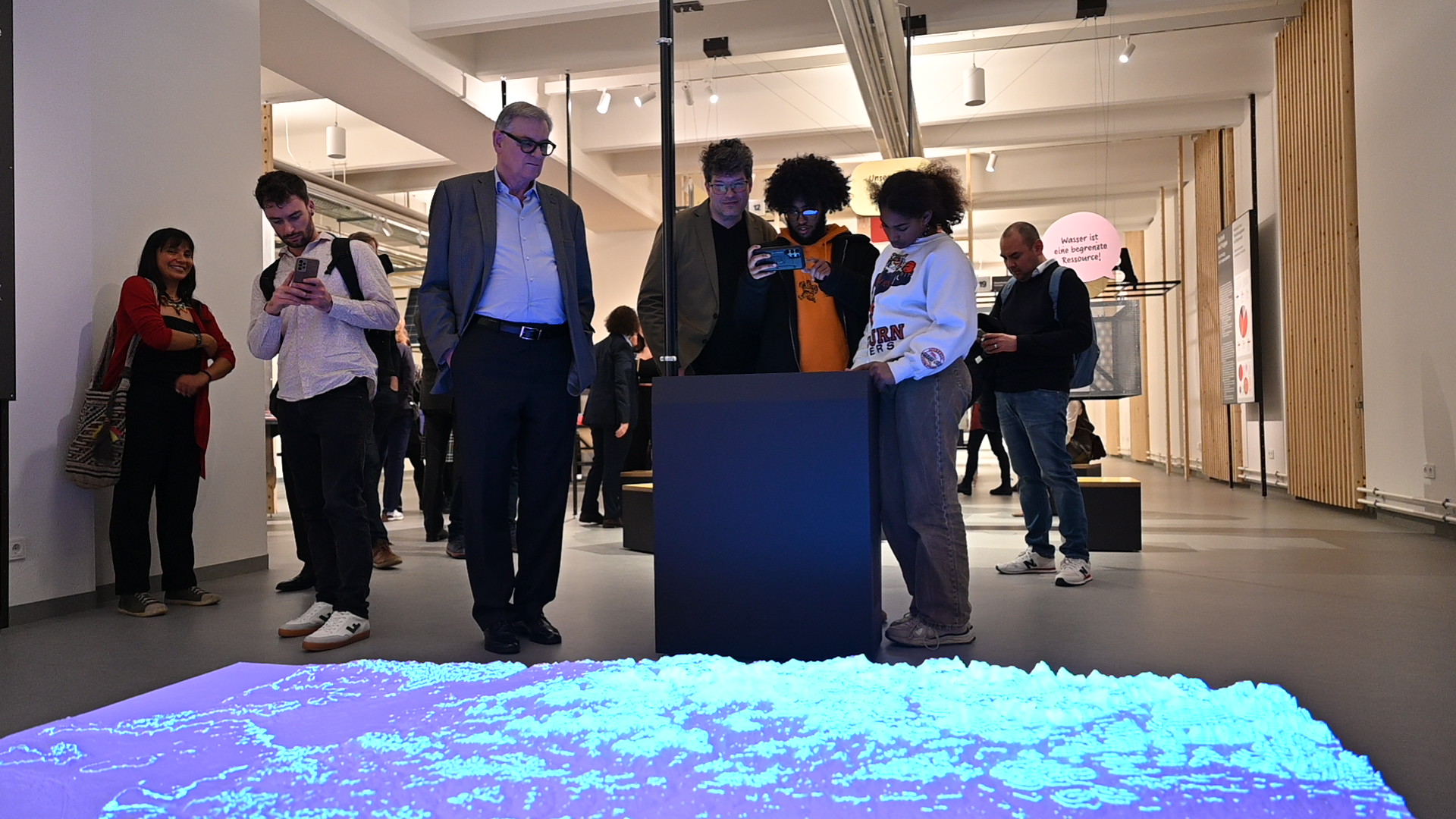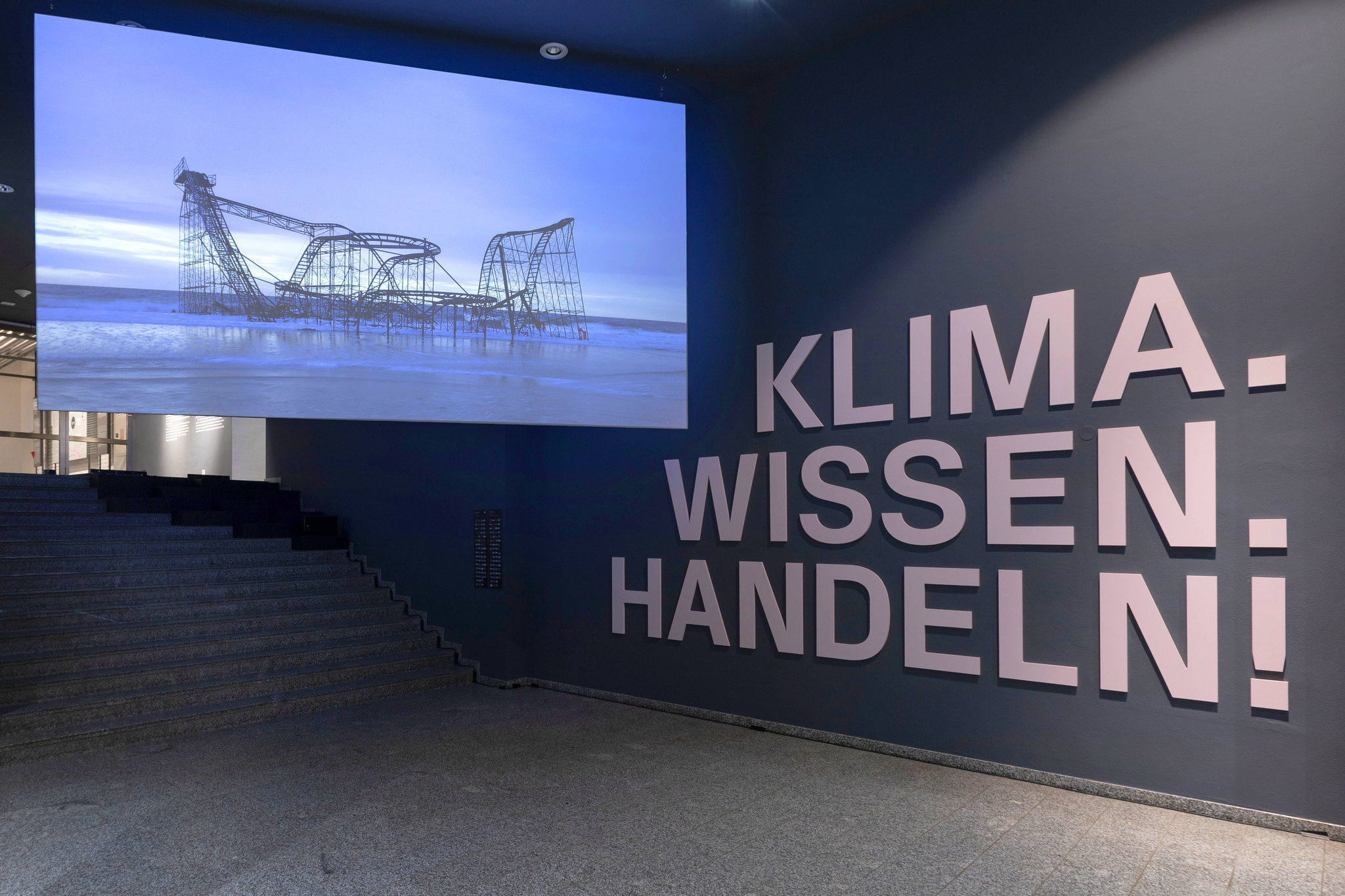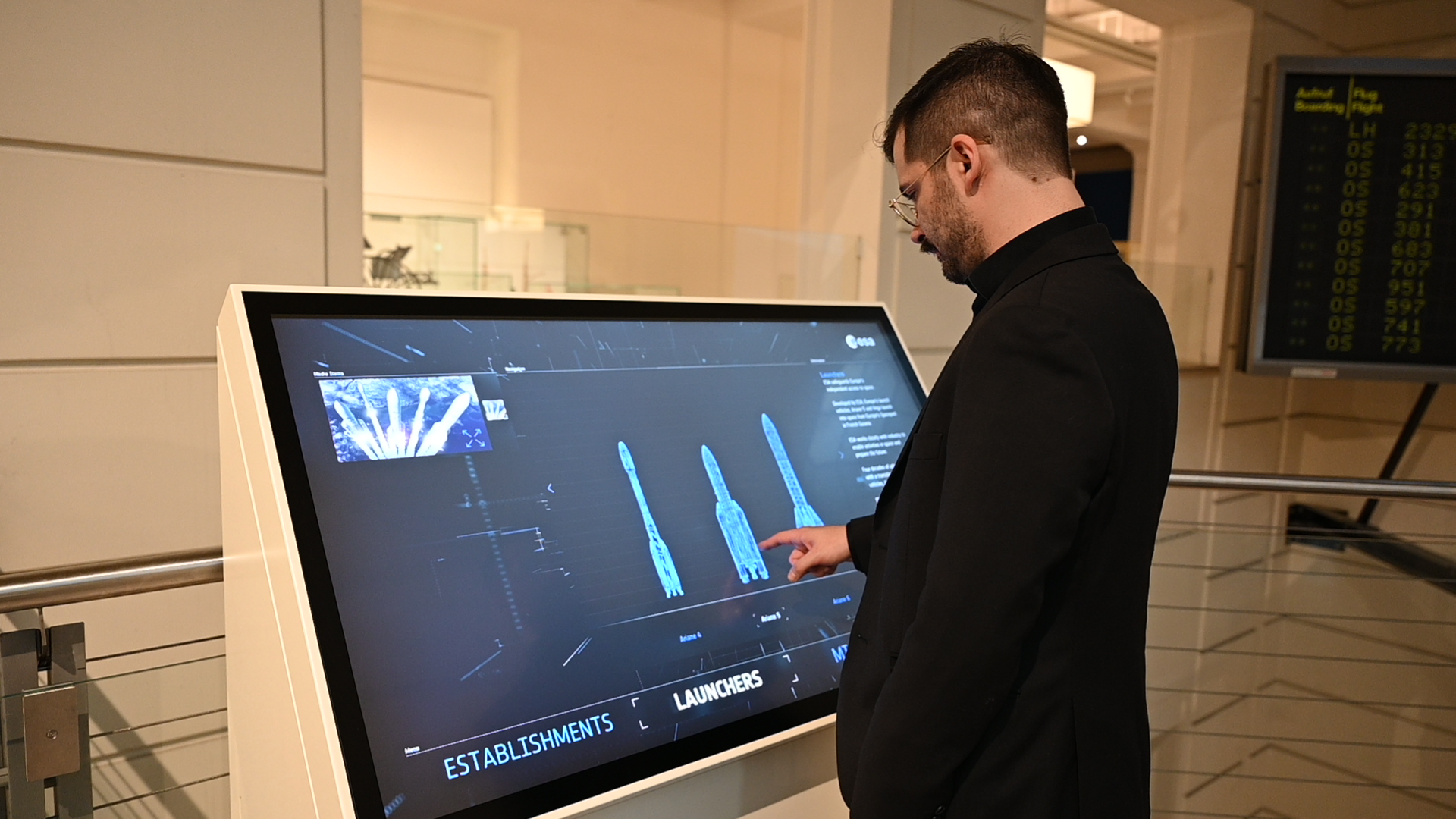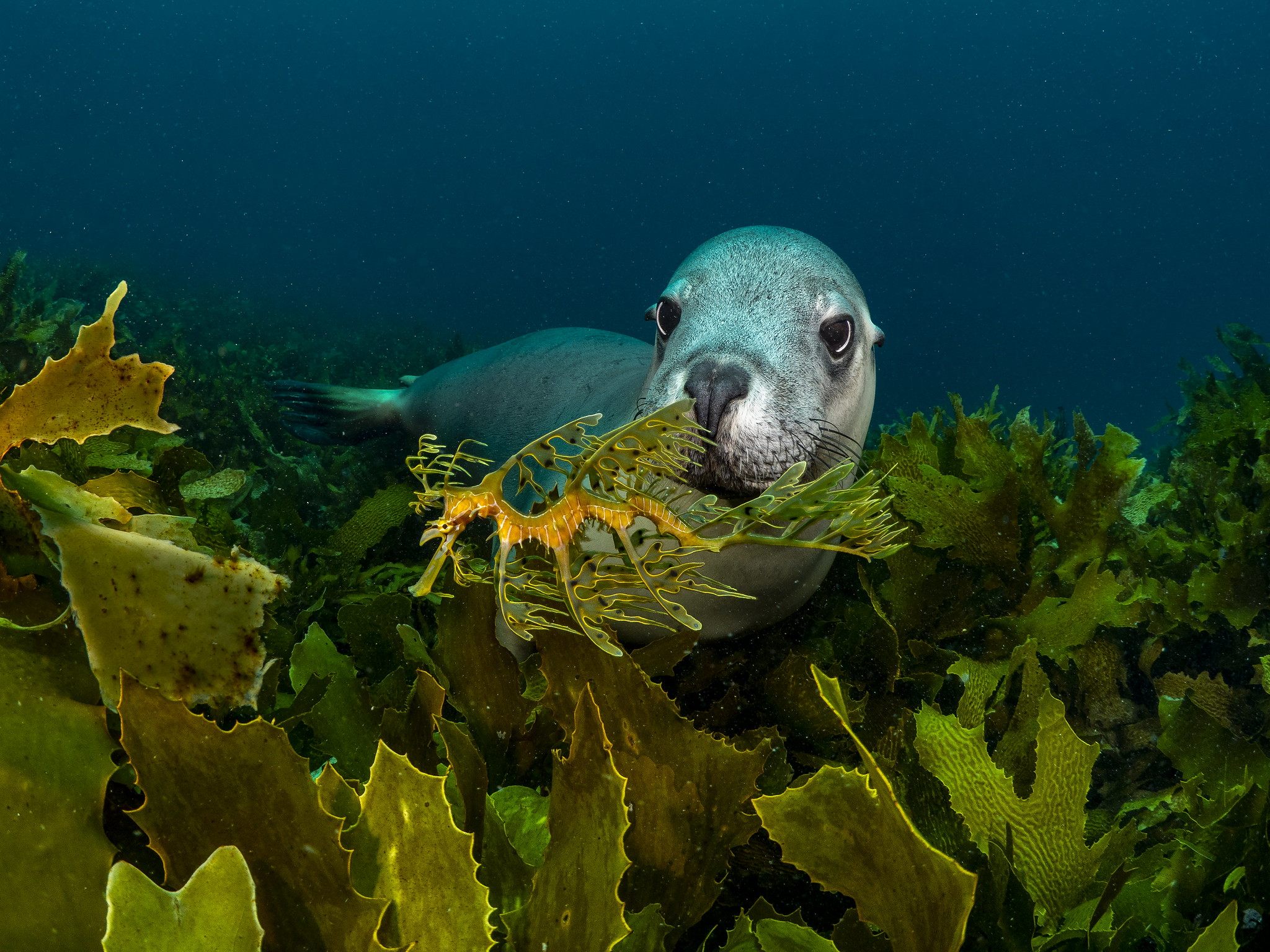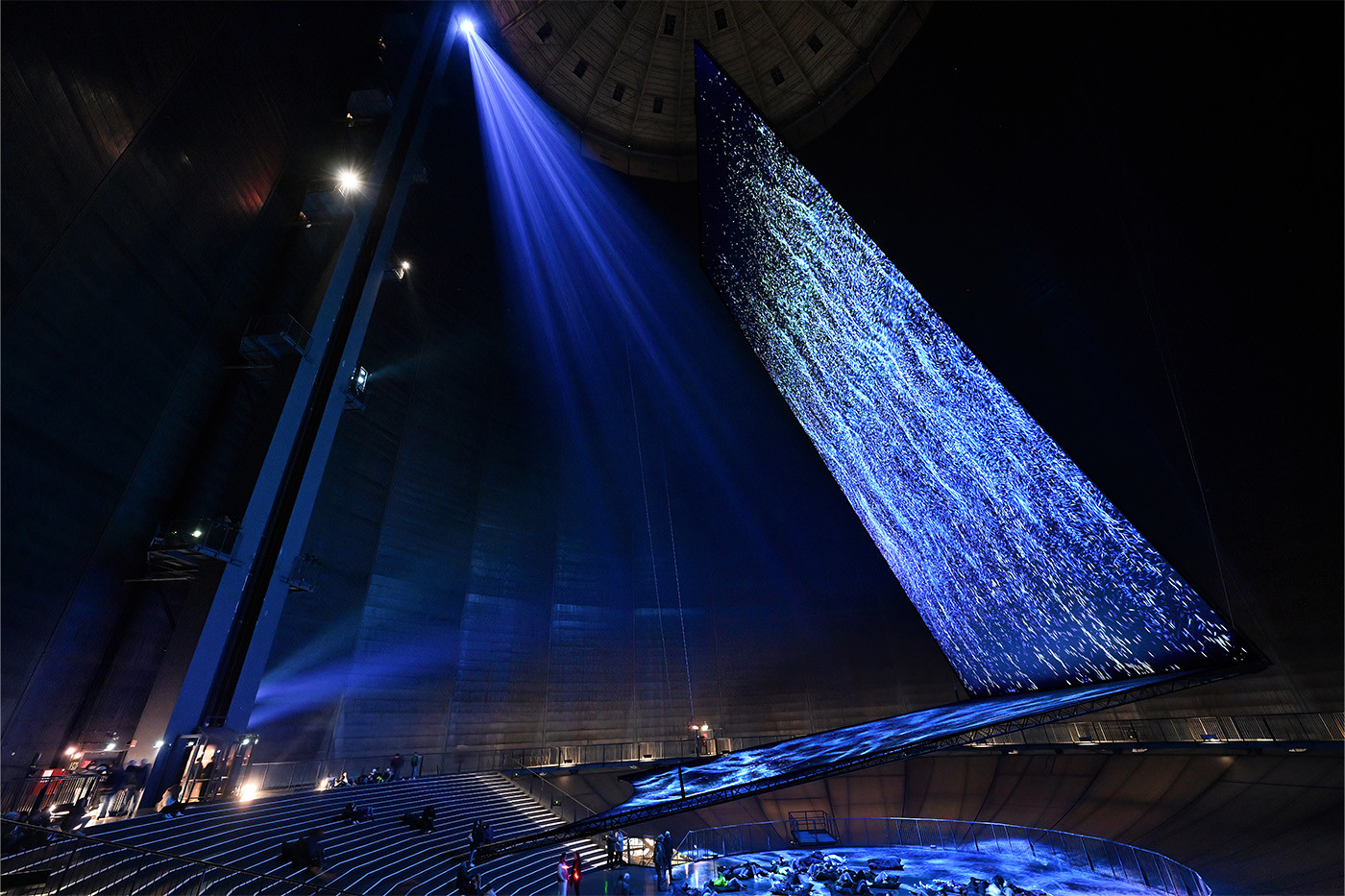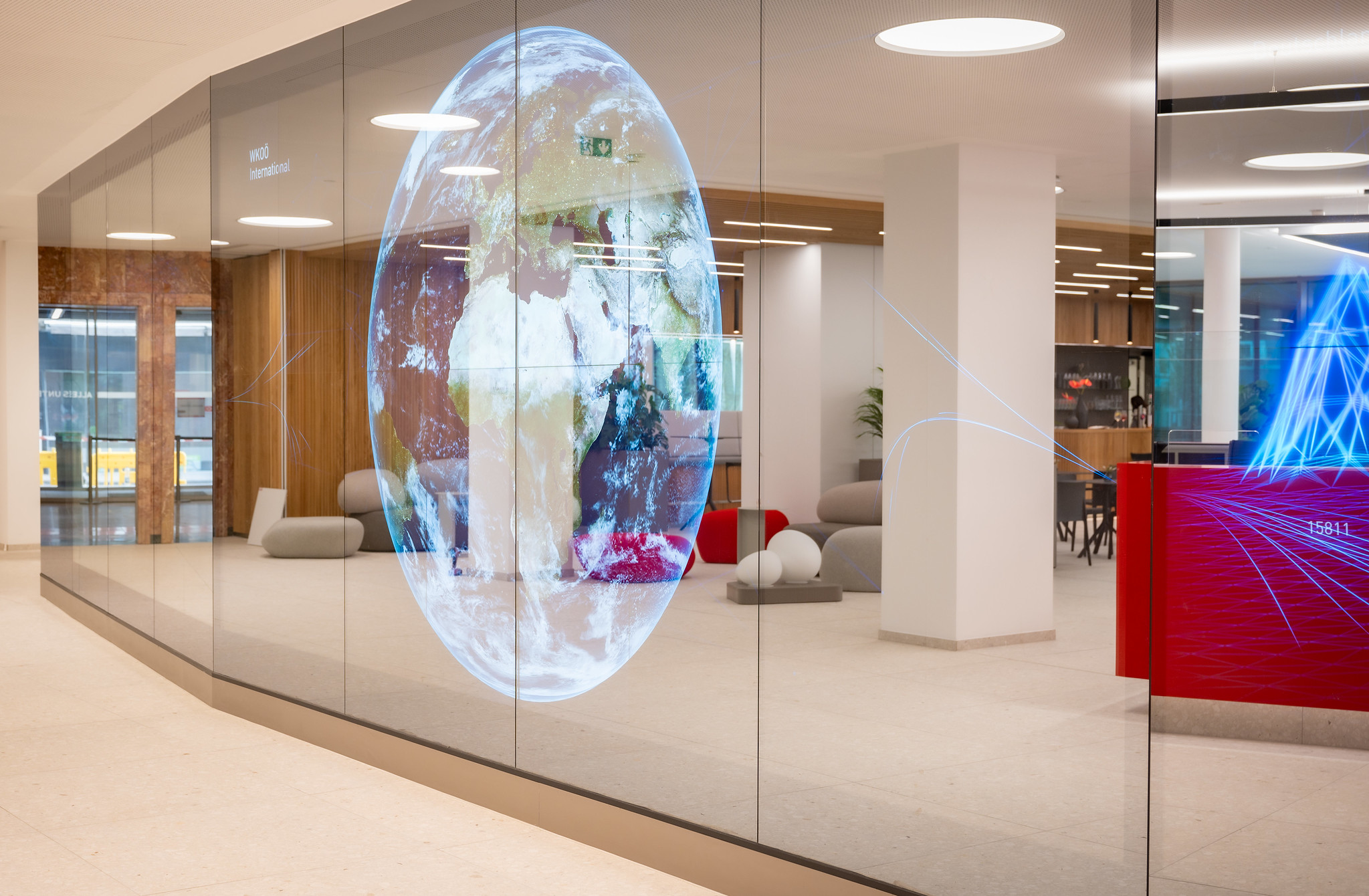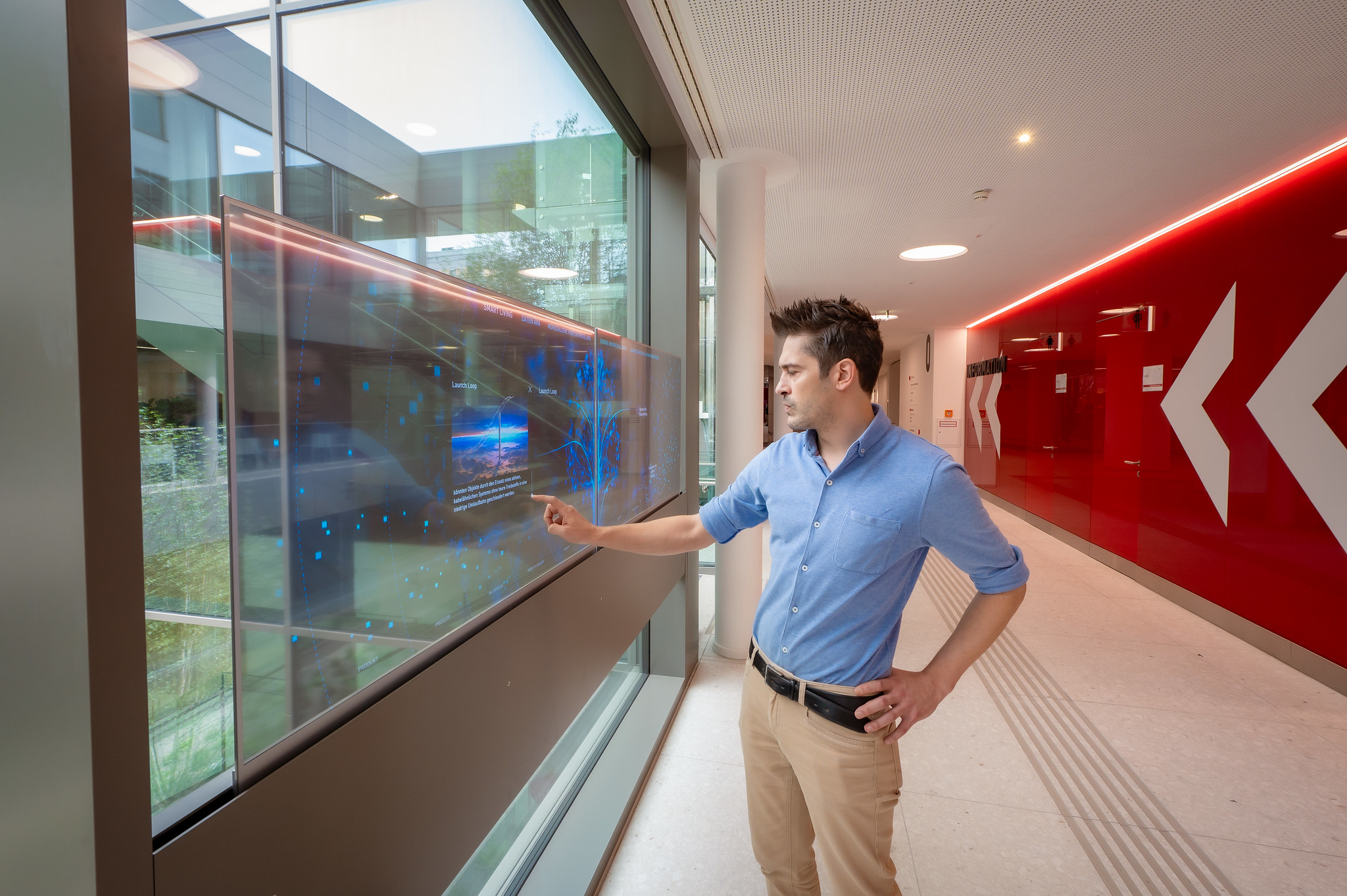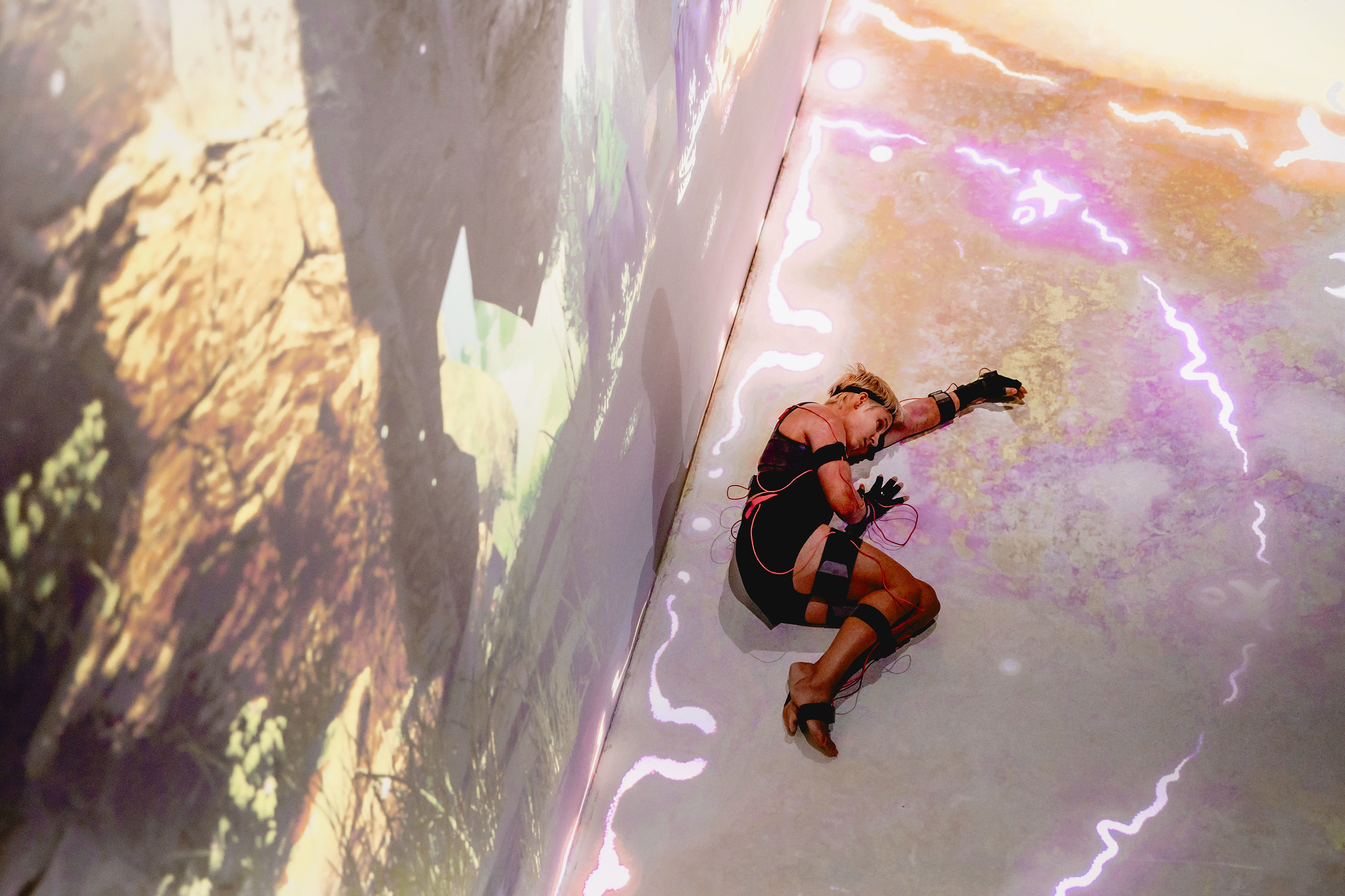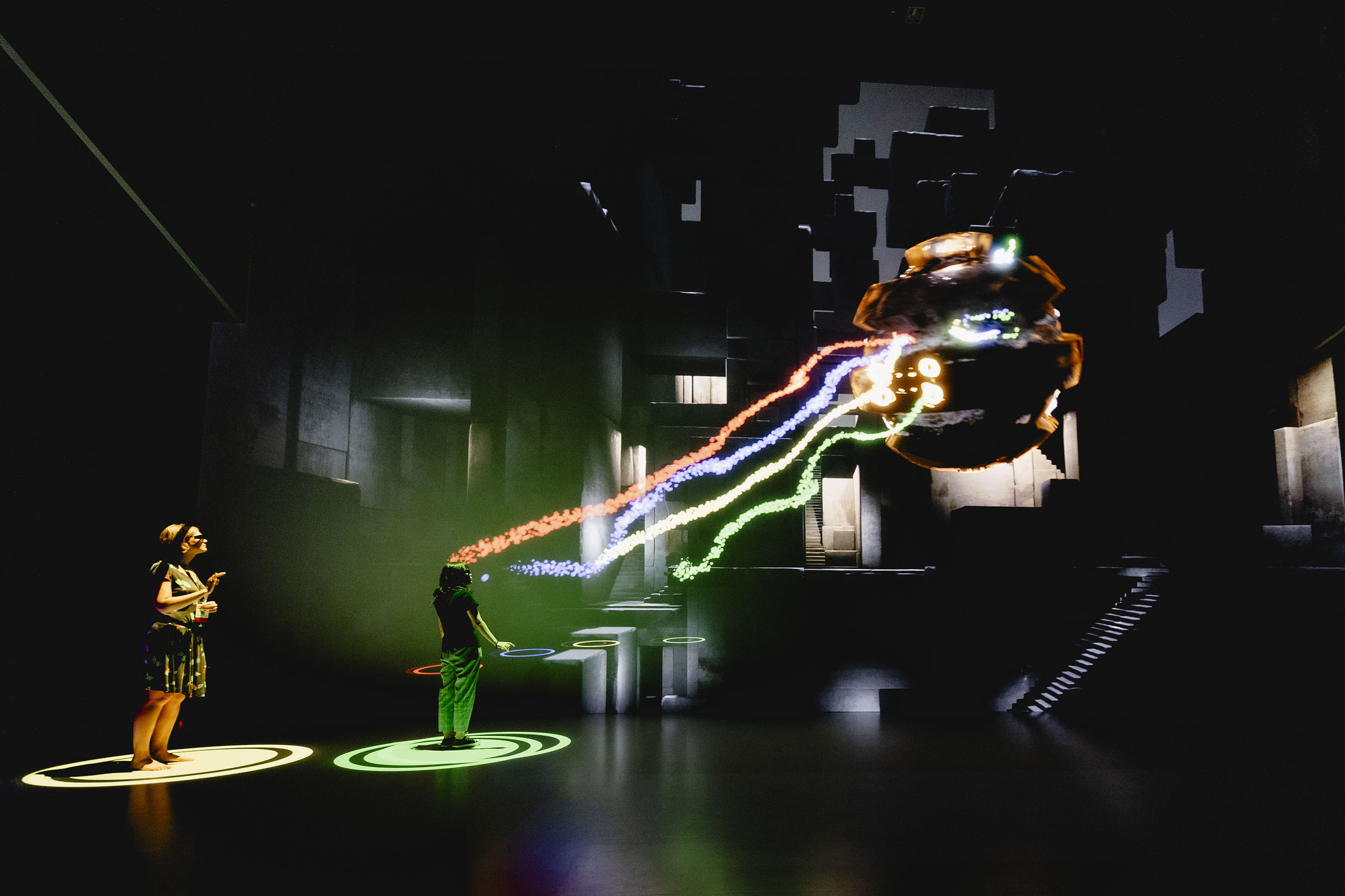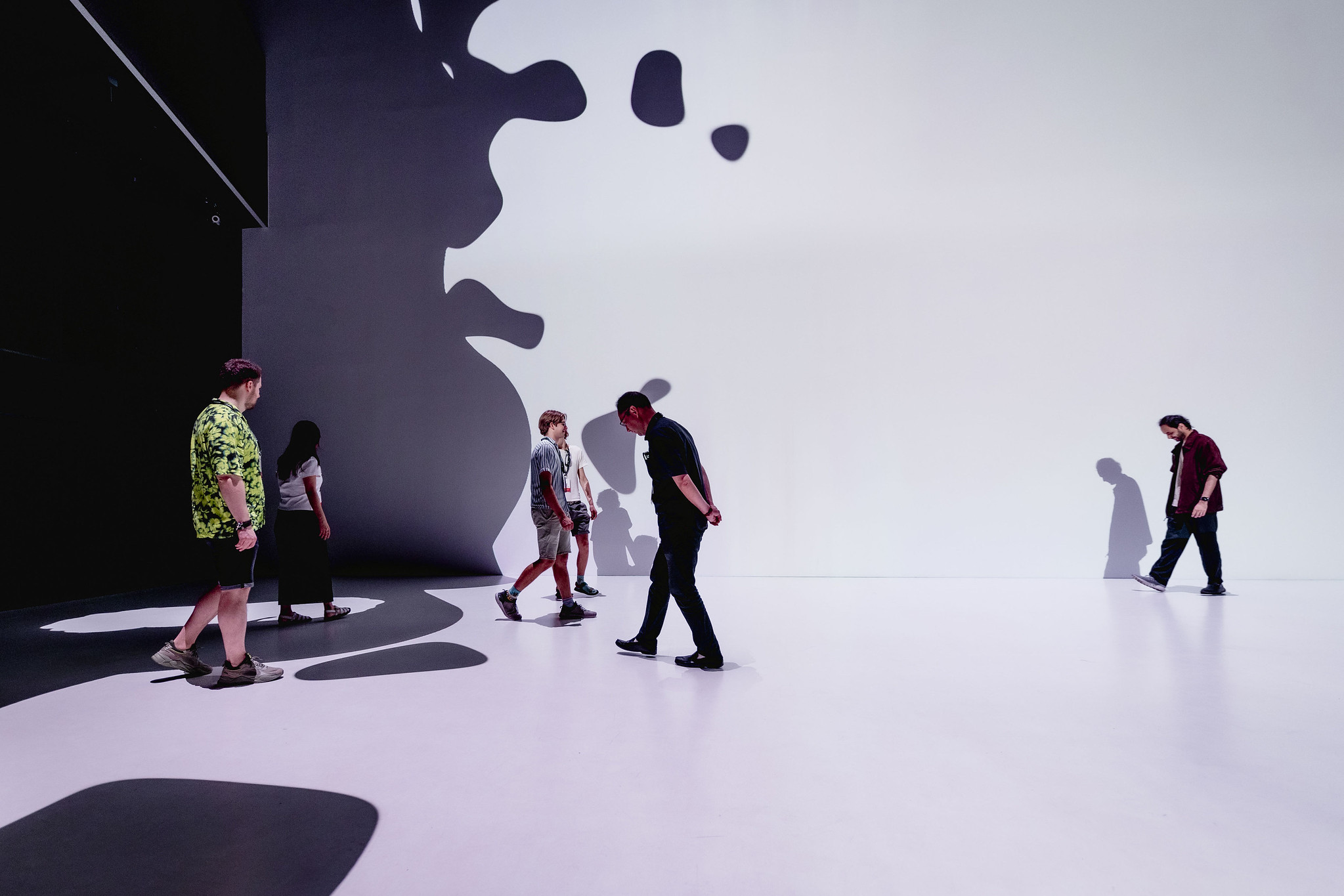From world-famous buildings to a unique composer, the endless depths of the ocean and an Austrian export hit: How Ars Electronica uses innovative technologies to implement artistic ideas.
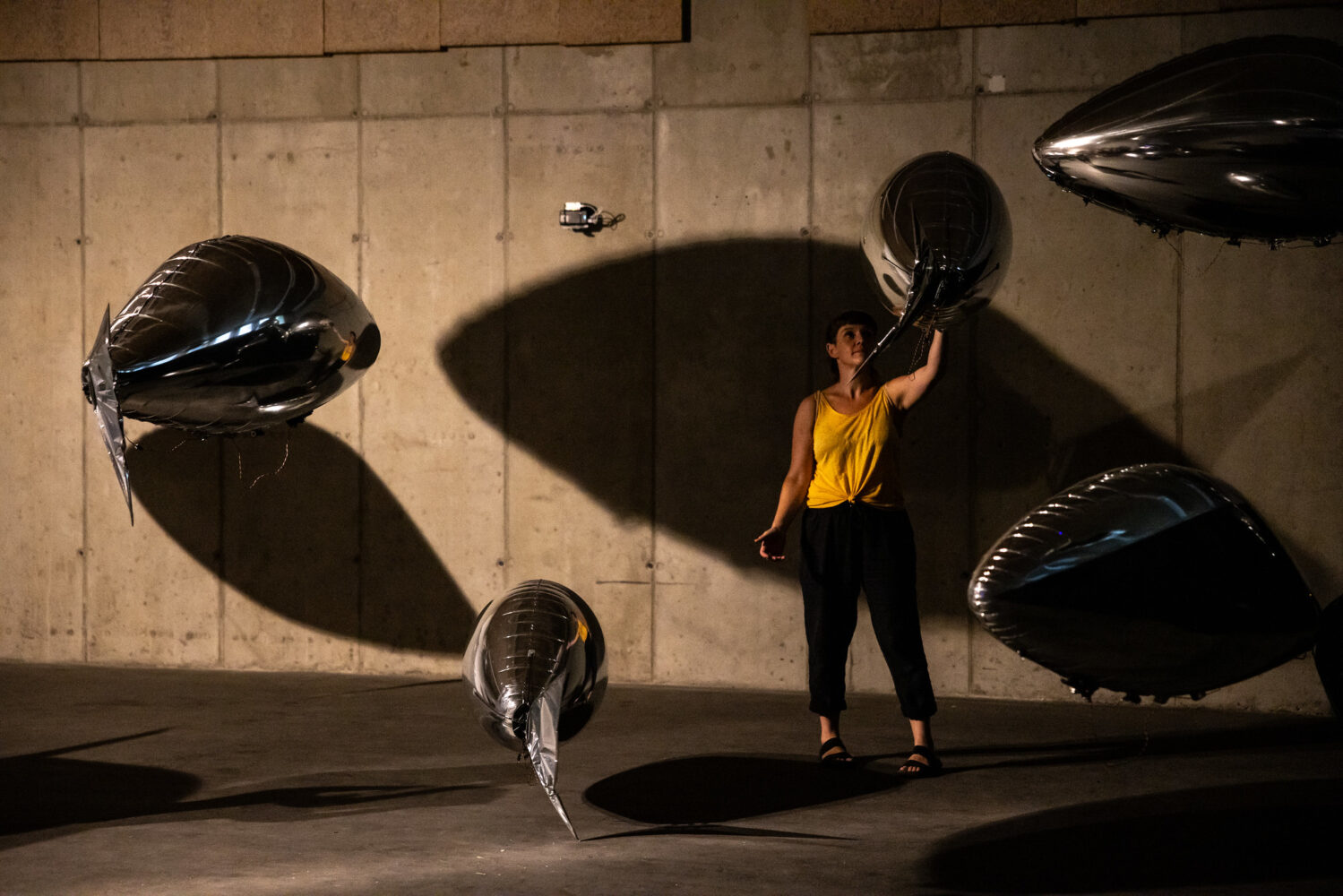
Year in Review 2024
As the year comes to a close, we take a moment to reflect on 365 days filled with exciting projects and events. We’ve captured the highlights of 2024 for you, centered around the three core pillars of Ars Electronica: art, technology, and society.
Ars Electronica is known as a platform for art – this is where artists are supported, new ideas are conceived in joint projects and then also exhibited and exported. Ars Electronica is also a platform by and for society – where the effects of technology are discussed, solutions and approaches to future issues are debated and philosophized about. Last but not least, Ars Electronica is also a platform for technology itself – a place where new things are developed, where it is shown what is possible, but where one also remains critical, where it is explored how technology can serve people and on this basis one can talk about the future and experience innovation.
With projects like “Notre-Dame Immersive”, “The Wave”, “Playing Anton” / “Being Anton” or the worldwide exported Deep Spaces, Ars Electronica shows how technological innovations can help to understand social and cultural challenges and to develop creative solutions for specific issues – sometimes in an amazingly playful way, sometimes impressively innovative, sometimes constructively straightforward. Experimentation, exploration and engagement is the mantra that guides all projects. The ideas and technologies developed are implemented in cooperation with international partners and customers as well as organizations around the world and are applied in numerous contexts. We have summarized for you below what these applications might look like, based on the most important projects of the past year.
Notre-Dame Immersive: cultural heritage brought to life by technology
In April 2019, the world-famous Notre-Dame Cathedral in Paris was severely damaged in a devastating fire, requiring years of reconstruction and restoration work. To mark its reopening in December 2024, the Ars Electronica Futurelab, together with the French start-ups Iconem and Histovery, has brought the world-famous cathedral to Deep Space 8K as an immersive experience. Visitors can explore a giant model of the building in stereoscopic 3D and discover its special features: from a journey through the impressive architecture to historical representations and the intricate details of the artistic glass windows.
The Ars Electronica Futurelab used state-of-the-art technology to present the cathedral as an immersive 3D experience: the project is based on a highly detailed point cloud of over a billion data points, created by art historian Andrew Tallon using laser scanning in 2010. This data was expanded by the start-up Iconem and the Futurelab and adapted to the specific requirements of Deep Space 8K. This included, among other things, adjusting the point density to ensure a smooth and flicker-free display, as well as integrating special details such as the rose windows and 360-degree panoramas. The result is an immersive stereoscopic representation of the cathedral that gives visitors a unique perspective of the building. They experience the stained glass windows, architecture and historical dimensions of the cathedral as if they were actually there – an unprecedented experience.
In addition, the technology behind the project was further developed for international use, for example as an immersive video installation, as is currently being shown at the Museum of Fine Arts in Houston. Want to learn more about the challenges the team faced and how to turn a point cloud into a 3D experience? Then read on here or watch our short project video:
By the way: Notre Dame is not Ars Electronica’s first cultural heritage project – you can also experience Guernica, the Great Pyramid of Giza or Venice in Deep Space 8K. But that’s not all! Find out here and in part 1 of our annual review what other art treasures and cultural artefacts you can experience in an immersive way and how these projects came about.
Data Art & Science Project 2024: Think Globally, Act Locally
Let’s look a little further beyond the borders of Europe’s cultural treasures and head to Japan: in the village of Azusakawachi in the rural Japanese prefecture of Shiga, Ars Electronica is continuing the “Data Art & Science Project” that began in 2023, a joint project between Toyota Coniq Alpha and the Ars Electronica Futurelab, to address the problems of outmigration and an aging population. The combination of art, technology and social initiatives creates innovative solutions to regional challenges. The project combines local narratives, places and impressions from the village to provide insights into the lives of the residents and their personal stories.
In 2024, several works were developed as part of the project, including Memories for Futures by the Ars Electronica Futurelab. The data for the project was collected in a two-day workshop in Azusakawachi, where participants used a novel technique called Gaussian Splatting to create 3D models of significant objects and places. In addition, the individual stories of residents were collected through qualitative interviews.
These approaches, combined with data science and artistic perspectives, create a model that is both locally effective and globally transferable. The project is thus an interdisciplinary experiment to preserve collective memories, combining scientific and artistic methods. This interdisciplinary approach – as anyone who has been following us for a while already knows – is the great strength of Ars Electronica’s projects.
The Data Art & Science Project is part of the initiative Ars Electronica Japan. Other projects in this context are Future Print together with Dai Nippon Printing, Future Teams with Ricoh and Future Ink with WACOM. Through their leadership and collaboration with CCBT (Civic Creative Base Tokyo) and the Matsudo International Science and Art Festival, a network for innovative art in Japan has been created. Together with Hakuhodo, one of Japan’s leading communications design firms, this initiative is at the forefront of the Art Thinking community, challenging Japan’s innovation agenda.
Playing Anton: Experiencing Music Interactively
Back in Europe, to be more precise in Upper Austria, the year 2024 marked the 200th anniversary of the birth of the famous composer, Anton Bruckner, who died in 1896. Ars Electronica is participating in the festivities in its own unique interactive way: with “Playing Anton”, Ars Electronica is revolutionizing the music experience by allowing visitors to immerse themselves in the sound world of Anton Bruckner. In Deep Space 8K, they can become composers themselves, using movement and position in the room to control which instrument groups of the Bruckner Orchestra Linz come to the fore.
The underlying technology is based on tracking systems that capture motion data in real time and adjust visual and acoustic outputs. This creates a collaborative music experience in which groups “play” the orchestra together and can experience a new dimension of listening. They are conducted by none other than principal conductor Markus Poschner – with whom, and with “his” Bruckner Orchestra Linz, the Ars Electronica Futurelab has implemented this project. It can be experienced at the Ars Electronica Center until spring 2025.
A second part of the anniversary project, Being Anton, takes visitors back to the time of Anton Bruckner – but you can read more about that in this blog. This project can also be visited until summer 2025.
Deep Space worldwide: Innovation Made in Linz
We are once again going out into the world: the technology behind Deep Space 8K – developed by the Ars Electronica Futurelab – is now being very successfully exported internationally by Ars Electronica Solutions. In 2024, after projects in Mexico (Culiacan), Hungary (Veszprem) and Switzerland (Vitznau), a total of three new Deep Spaces were opened in China (Shanghai and Hangzhou) and Croatia (Zagreb). These immersive spaces use high-resolution 3D projections and interactive applications to offer unique experiences that combine science, art and technology. Each installation is adapted to local needs – a great strength of this technology.
Deep Space in Shanghai, for example, integrates state-of-the-art 8K projectors to take immersive learning and artistic experiences to a new level. In Hangzhou, the room has even been equipped with theater chairs to create an intimate atmosphere for screenings and performances. In Zagreb, on the other hand, the focus is on science communication, with applications that bring the universe to life in stunning 3D visualizations. The technology is based on modular 3D projection systems that use laser tracking to enable interactive experiences. In addition, a mobile interface allows moderators to control complex content, making Deep Space flexible for a variety of events.
Dachstein Glacier: Experience the Impact of Climate Change
Our next project takes us to great heights: this year, Ars Electronica is making climate change tangible at the Dachstein Glacier. While the mountain terminal of the Dachstein Glacier Gondola Lift is being renovated, three interactive stations created by Ars Electronica Solutions have been installed. These enable visitors to intuitively experience the central significance of the climate for nature and thus for us humans.
The first eye-catcher is already in the base station with the “Half Dome Globe”: Ars Electronica Solutions presents a representation of the globe that uses atmospheric data, information about land areas and ocean data – provided by the ESA – to illustrate global phenomena of climate and global warming. In the mountain station at 2,700 meters above sea level, two installations were developed, financed by the state of Upper Austria: An interactive touch screen visualizes data and facts about climate-related changes in the Dachstein region, which come from the APPtauen Dachsteingletscher app (Upper Austrian government) and have been specially expanded for large-scale display on the touch screen. It makes it clear that climate change is not just an abstract concept, but has a real impact where we are.
Finally, visitors can try out the digital telescope in the glacier restaurant: the view of the real mountain landscape is supplemented by a digital layer (overlay) that changes and displays information depending on the movement of the telescope. Visitors get a completely new view of the mountain range, the imposing 850-meter-high south face of the Dachstein or the melting of the glacier at the Rosmarie Stollen. The view through the “digital telescope” of the ascent on the mountain creates a direct local connection. This makes the drastic disappearance of the eternal ice an impressive experience.
Technisches Museum Wien: Discover Science Playfully
The visualization of climate change, which has now become a kind of “core competence” of Ars Electronica Solutions, is the subject of the exhibition “Climate.Knowledge.Action!” at the Technical Museum in Vienna. Here, Ars Electronica shows how science can be made accessible to a broad audience. Interactive touchscreens and a three-dimensional elevation model of Vienna enable visitors to explore global climate data and local effects.
The technology is based on high-resolution projections that can be controlled by users via touch interfaces. A particular focus is on satellite data provided in cooperation with the ESA and the German Aerospace Center (DLR). This interactive combination of Earth observation and local analysis creates an immersive learning experience.
The Wave: Dive into the Ocean
In the face of this year’s challenge, all previous Ars Electronica Solutions projects seem almost like child’s play: How do you project the ocean into a 100-meter-high cylinder? In the Oberhausen Gasometer, “The Wave” takes visitors on a journey through the oceans. Lifelike 3D animations of the underwater world are shown on a projection measuring over 1,000 square meters.
The installation is based on a combination of high-resolution renderings and an adaptable particle system that interacts in real time. The technology makes it possible to dynamically display currents, schools of fish and other elements, resulting in a particularly realistic and captivating visual experience. The experience is rounded off by a unique soundscape, developed together with musician Rupert Huber.
The exhibition “Planet Ocean”, with “The Wave” as its central exhibit, is the most successful exhibition ever held at the Oberhausen Gasometer – in terms of both visitor numbers and audience ratings. Due to its great success, it has been extended until November 30, 2025.
WKOÖ: Visualizing Global Networks
Another project commissioned by Ars Electronica Solutions can be seen in Linz: at the Haus der Wirtschaft of the WKOÖ, Ars Electronica is once again using technology to make the global network of the organization interactively tangible with the “Julius Raab Band”. A dynamic world map forms the centerpiece of the installation and shows the WKOÖ’s worldwide relationships in real time. This is complemented by additional interactive modules that allow users to explore specific information about networks, trade flows and international projects of the Upper Austrian Chamber of Commerce.
A customized software was used for this purpose, which processes and projects data in real time. A touch interface allows intuitive navigation through the global interrelations. Special algorithms ensure that the visualizations are not only aesthetically pleasing but also easy to understand. This makes it possible to present the complexity of international relations in a way that appeals to both experts and non-specialists – and, last but not least, visually complements the newly designed premises.
SHARESPACE: Hybrid Realities for a Connected Future
But it’s not only Ars Electronica Solutions that is thinking about innovative solutions in projects like these: the European research project “SHARESPACE”, in which the Ars Electronica Futurelab is involved, is investigating how avatars can be used in social situations. With innovative XR technology and novel sensors, so-called Shared Hybrid Spaces are created in which people and avatars interact together.
The main goal of the project is to take augmented reality (XR) to a radically new, ethical level by expanding the possibilities for interaction in a virtual space with avatars. In total, two university hospitals, three universities, five research institutes and four companies are participating in the three-year research project, which runs from January 2023 to December 2025. As part of the project, the developed technology will be applied in three real-world scenarios (sports, health and art) and presented at high-profile events such as the 2024 Summer Olympics and the Ars Electronica Festival 2024 & 2025.
“Converge”, a project developed by the Futurelab in-house for SHARESPACE in 2024, for example, combines deep space and SHARESPACE technology to create a new kind of experience in which on-site participants are connected to an external player to explore scenarios together, the solutions to which are only hinted at through subtle visual clues. The minimalist style highlights movements and interactions, and ends with the participants having to prevent hundreds of AI characters from falling into ever-larger holes.
Conclusion: Use Technology to Develop, Narrate and Experiment
The mantra of experimentation, exploration and engagement mentioned at the beginning of this article is manifested in these projects – and in many more. They show how Ars Electronica uses technology, how we see technology as a field for experimentation, but that it always has to be playful and have a critical and artistic focus on people. In all its projects, Ars Electronica combines a willingness to experiment, technological excellence and social benefit.
Whether through immersive experiences such as “Notre-Dame Immersive”, locally rooted projects such as the “Data Art & Science Project” or global exports such as Deep Spaces – Ars Electronica shows how technology can shape tomorrow’s world – if we have the courage to engage with it instead of blindly embracing every new development, but also without demonizing it. With each new project, the vision becomes more tangible: a world in which art and technology build bridges in society to meet local challenges and global opportunities.
If you want to join us again next year on our exciting journey and be part of the Ars Electronica platform, you are cordially invited to follow us on our social media channels such as Facebook, Instagram, LinkedIn, and YouTube, subscribe to our newsletter, or visit us at the Ars Electronica Center.
